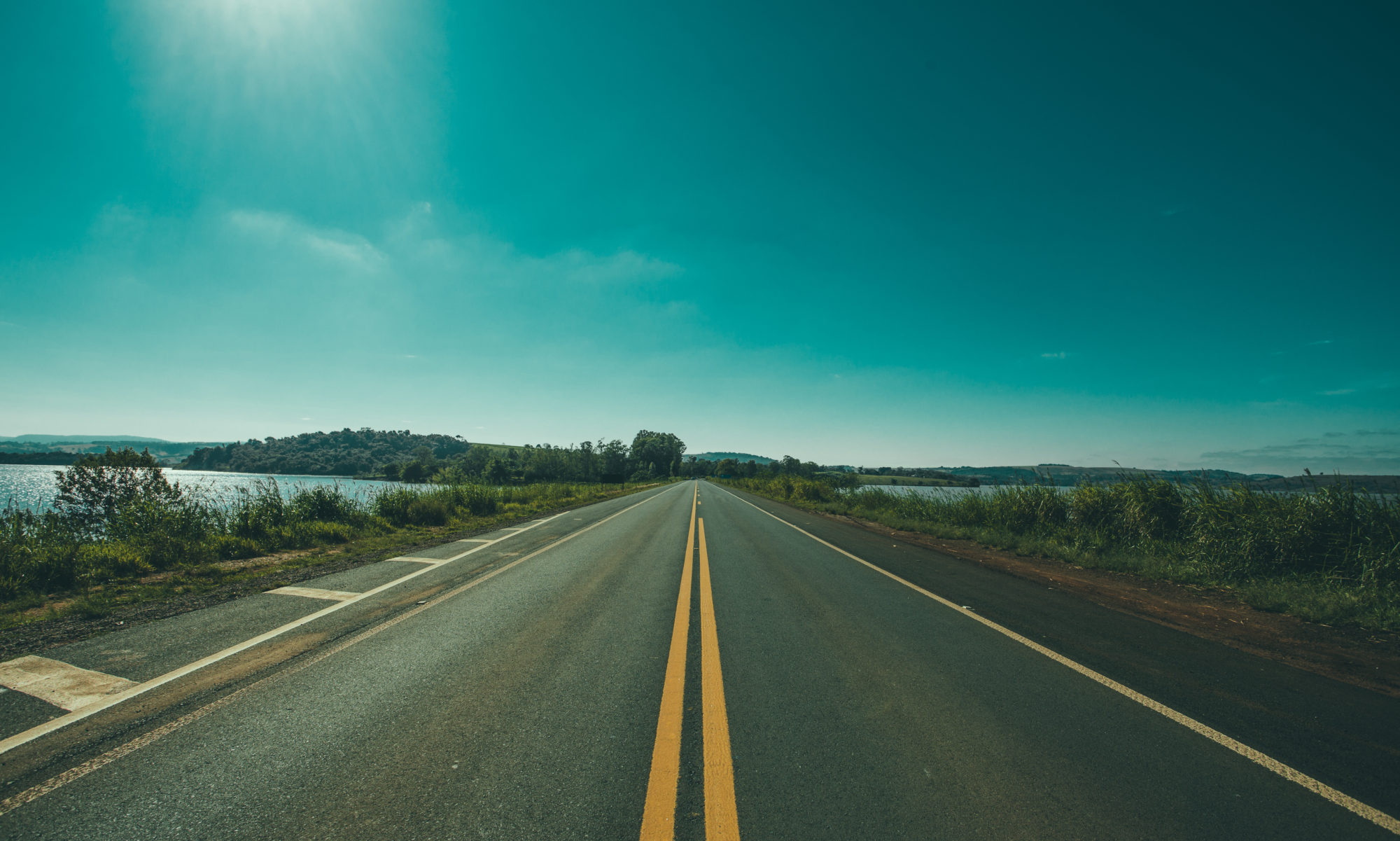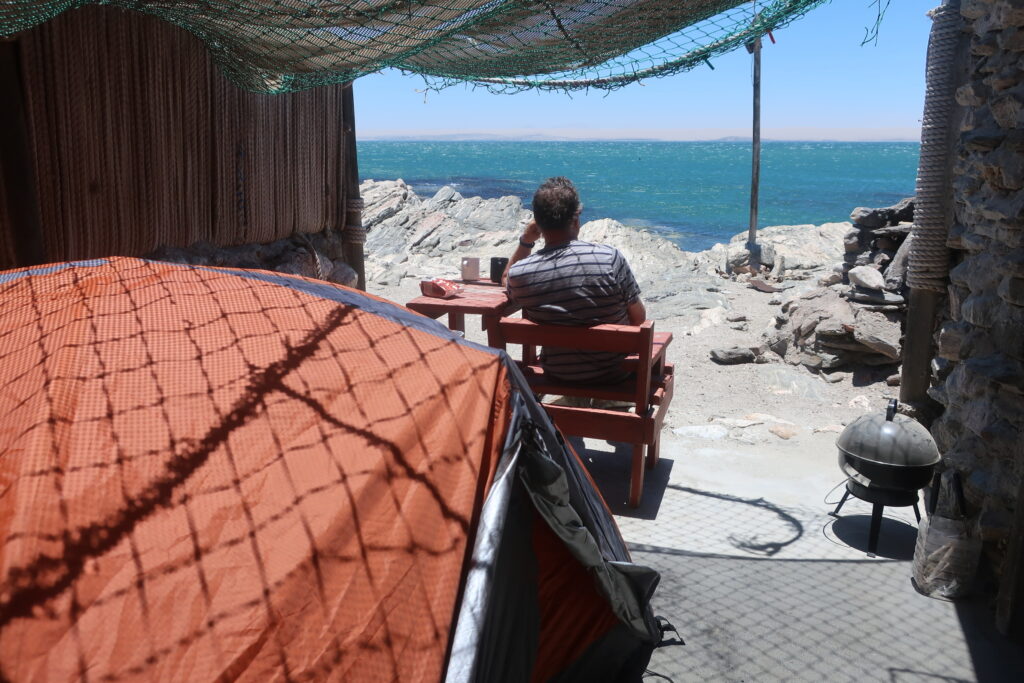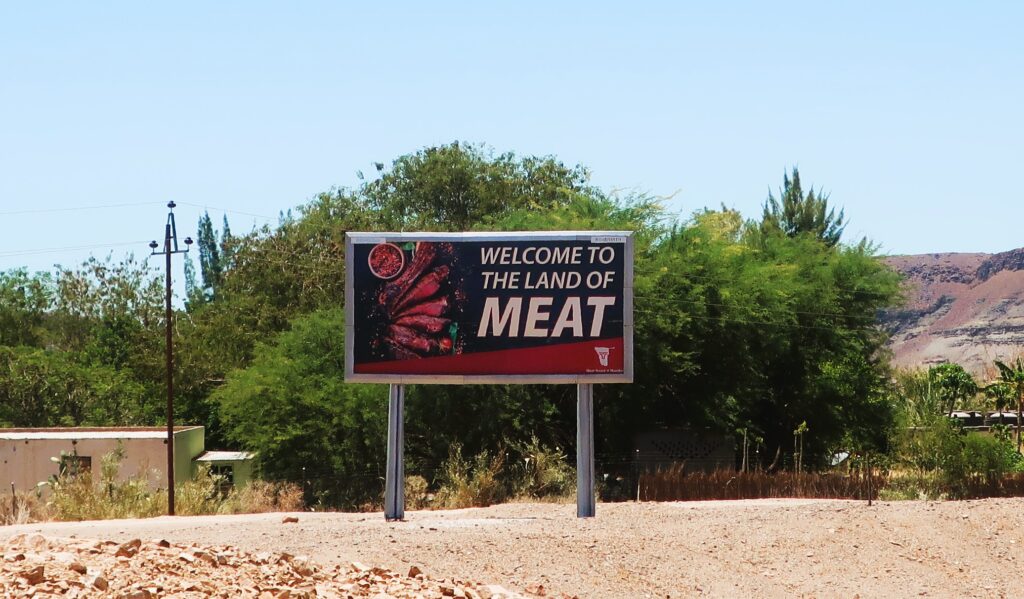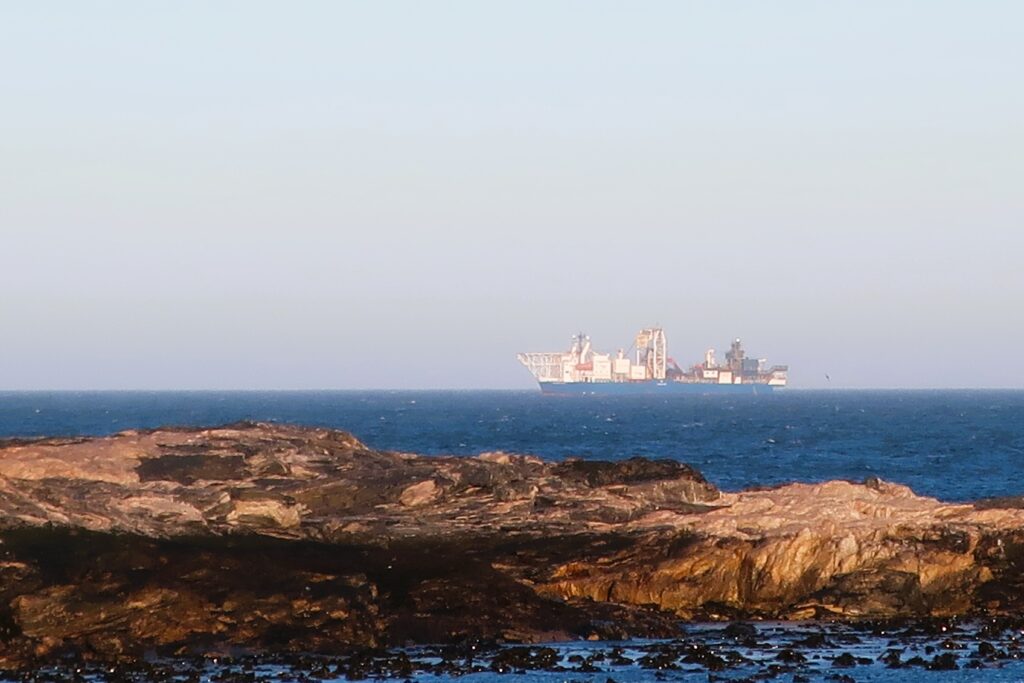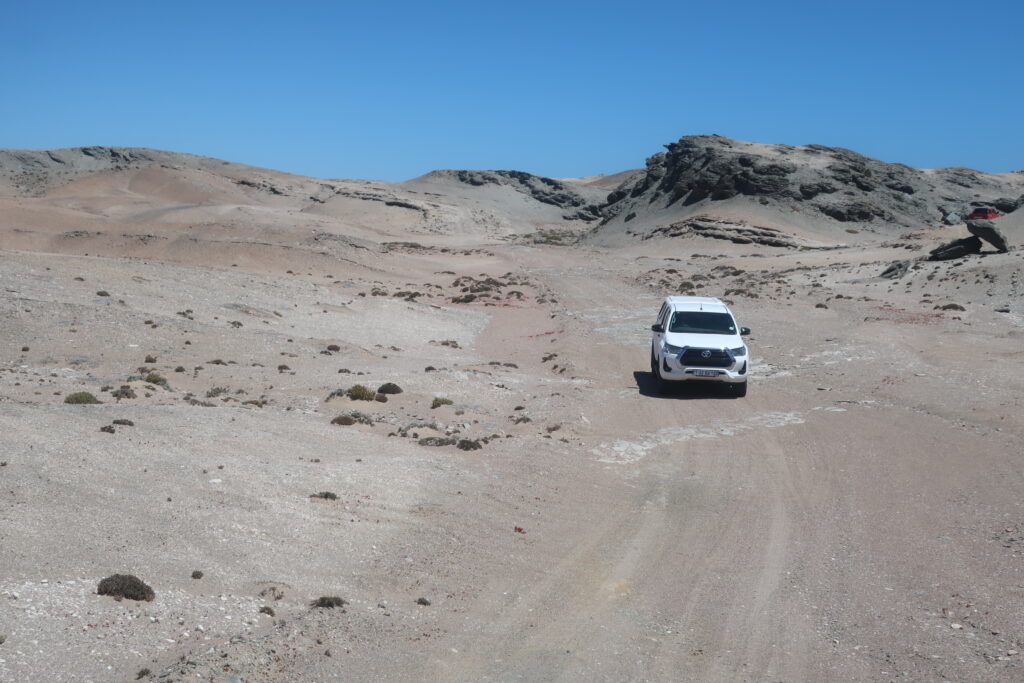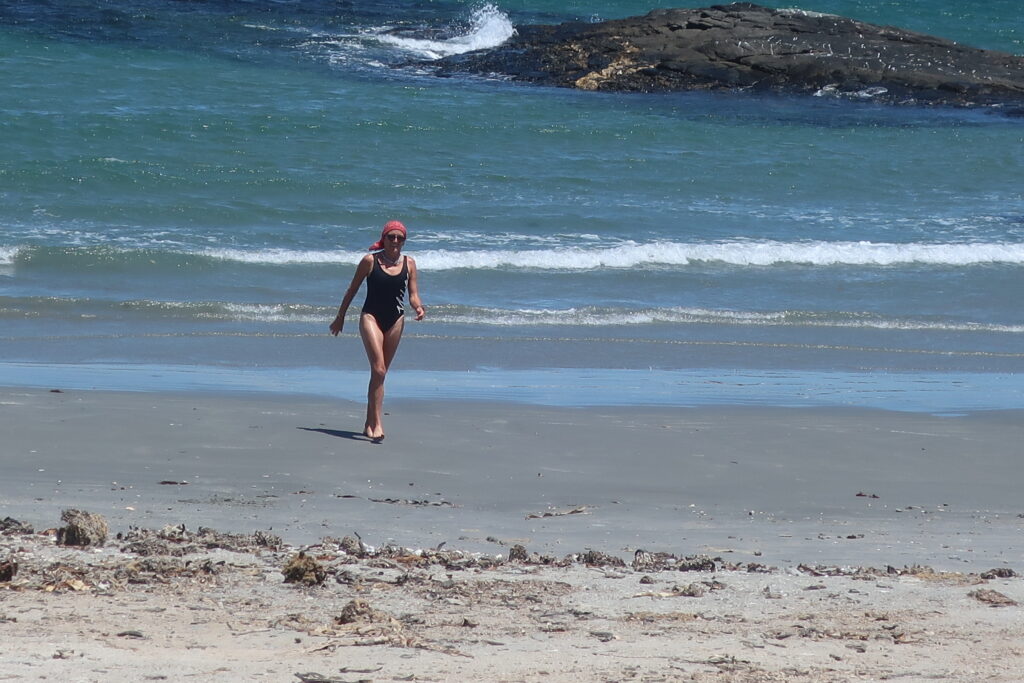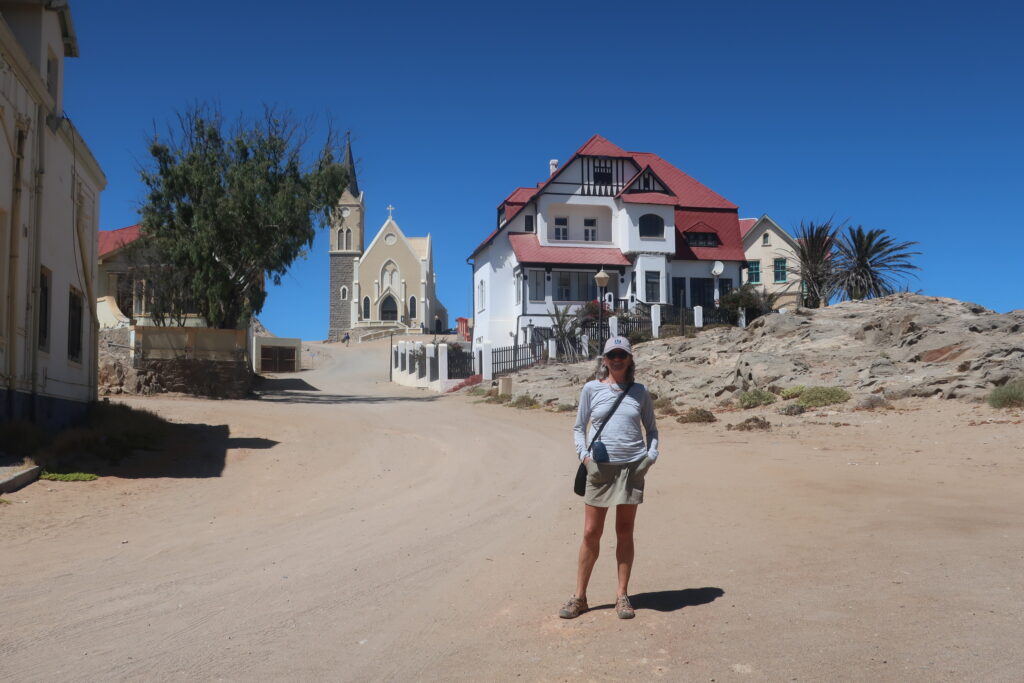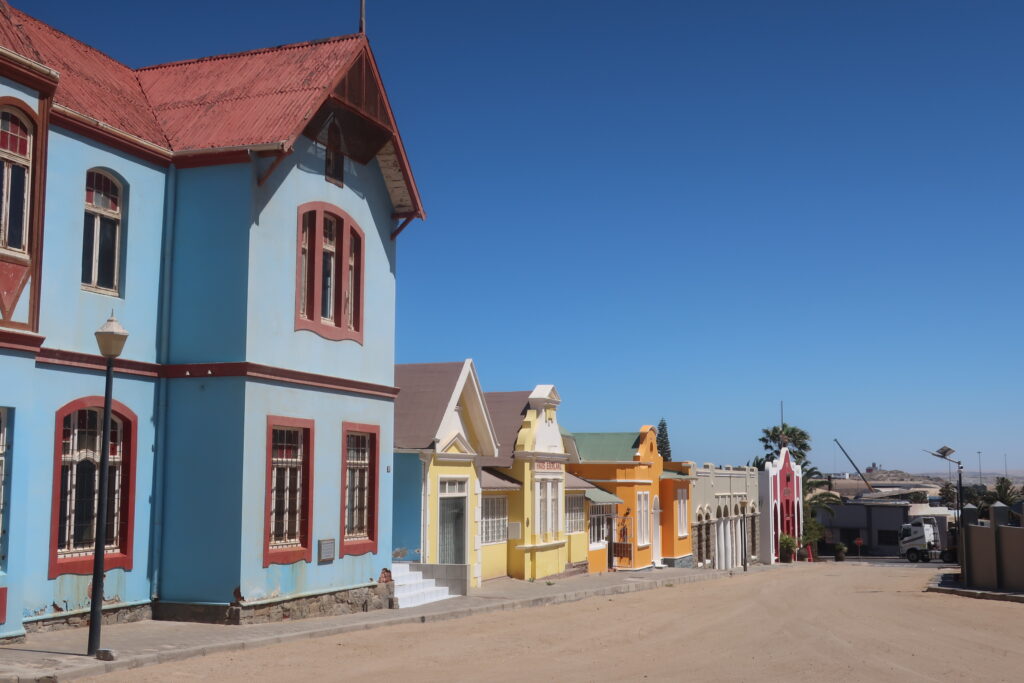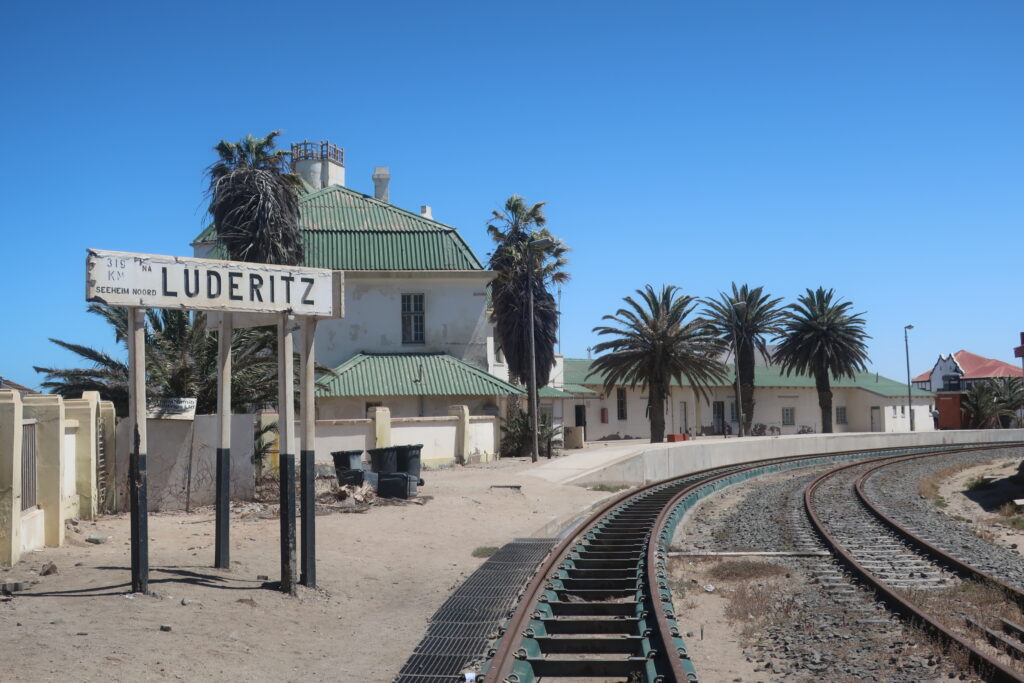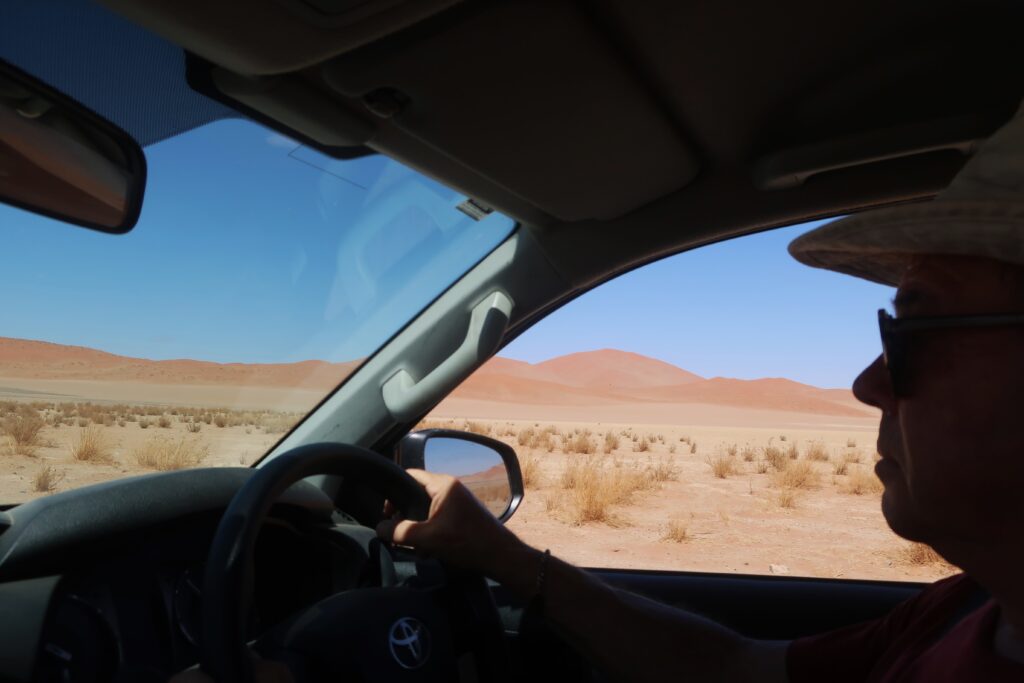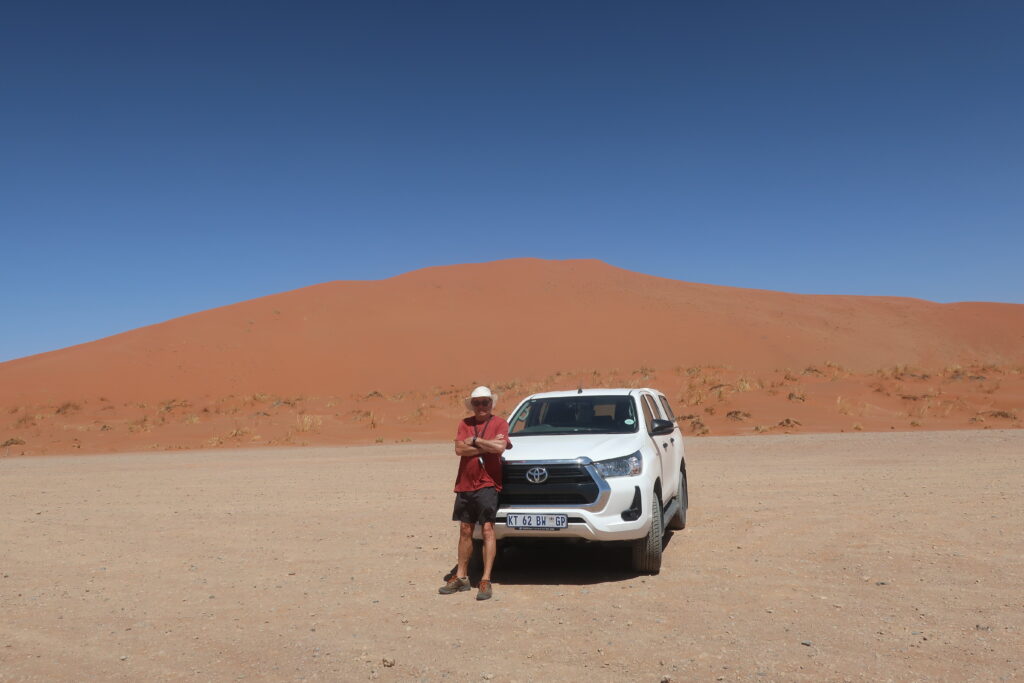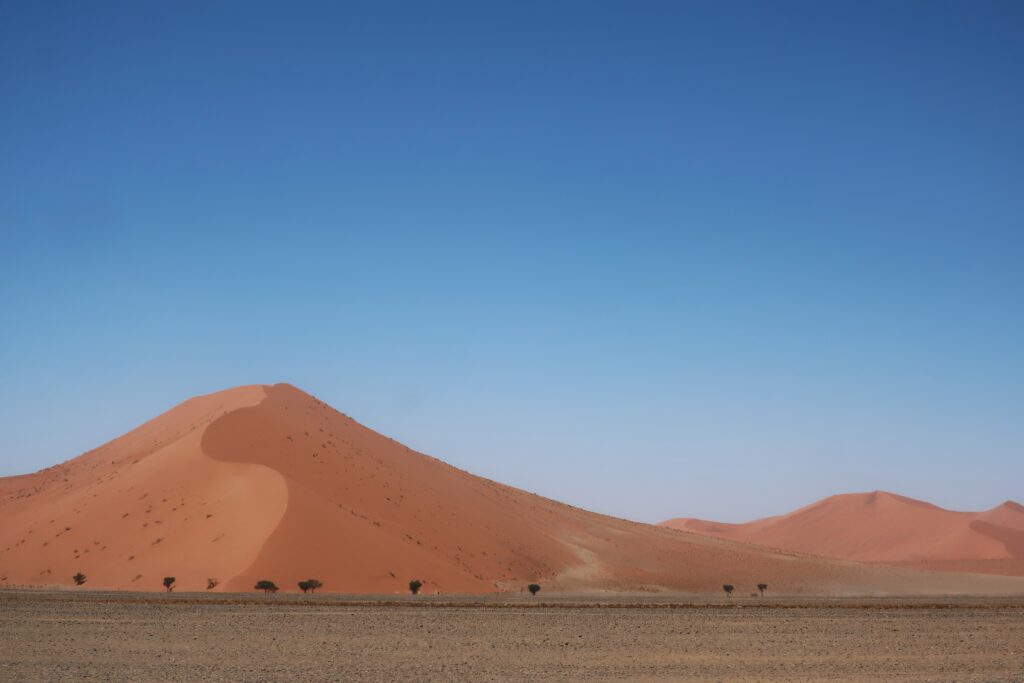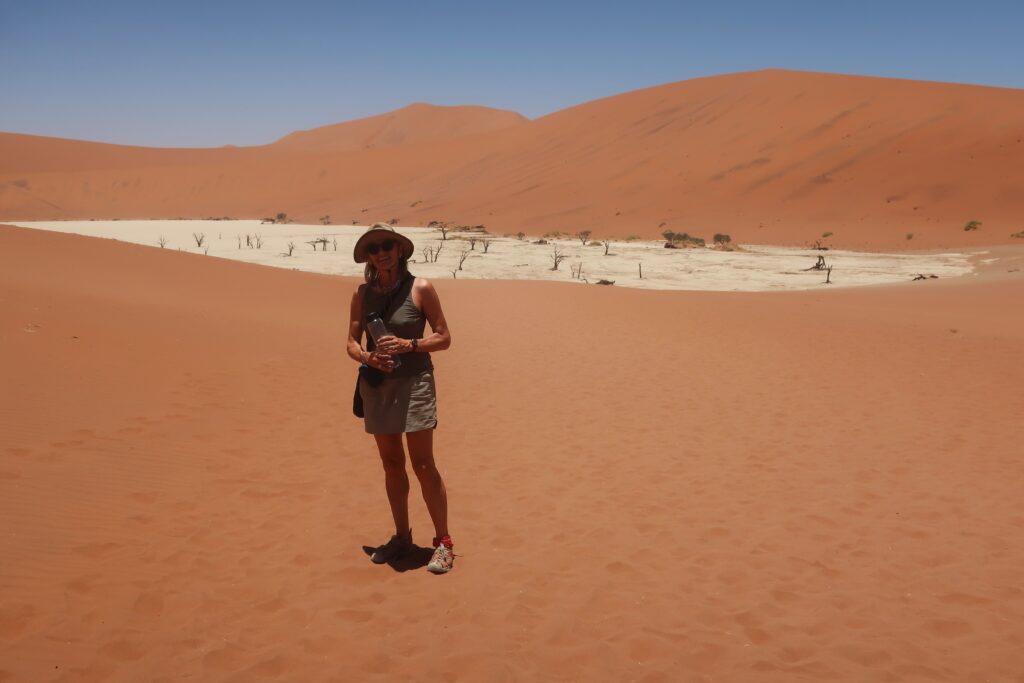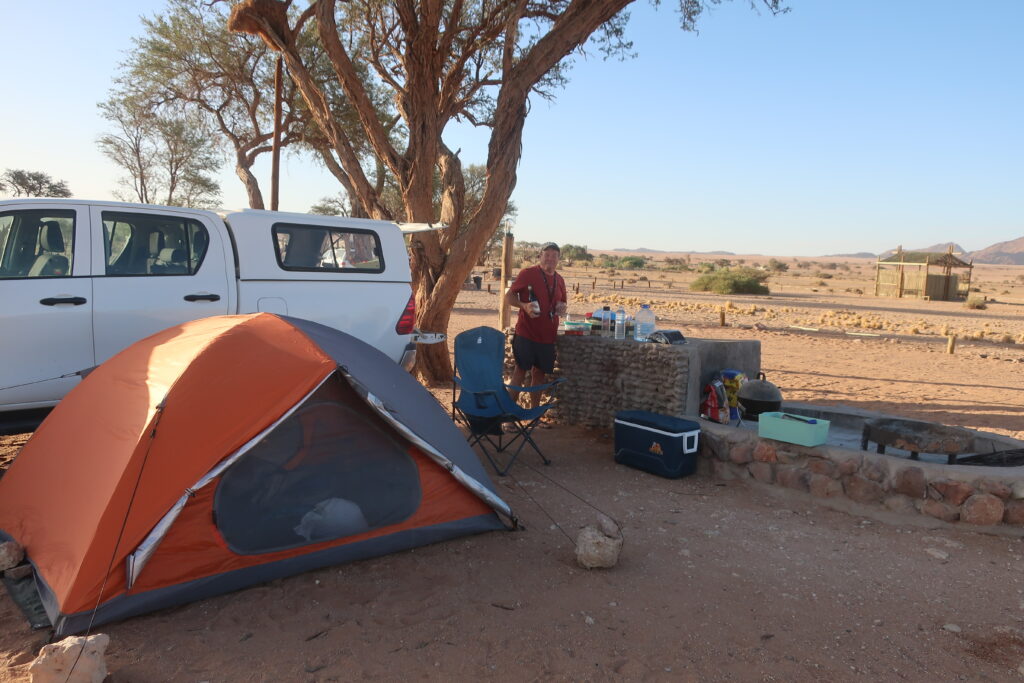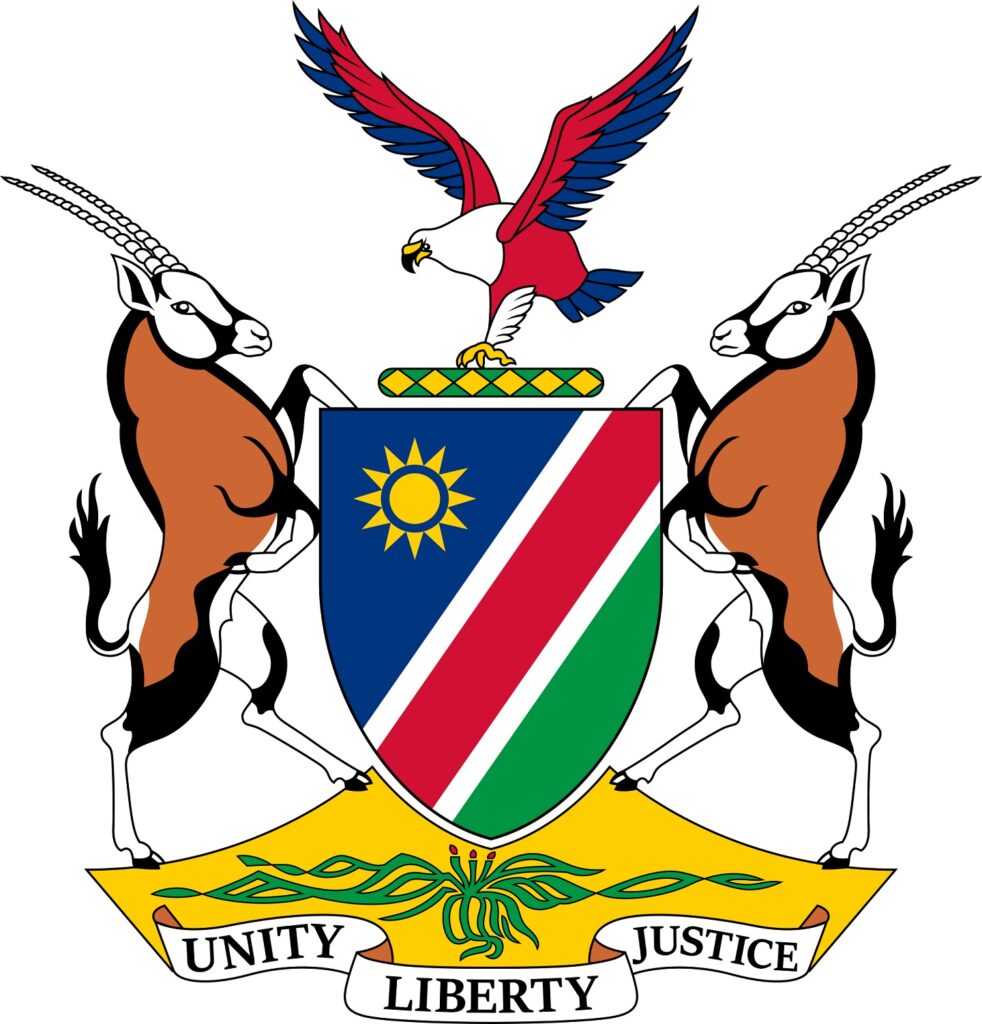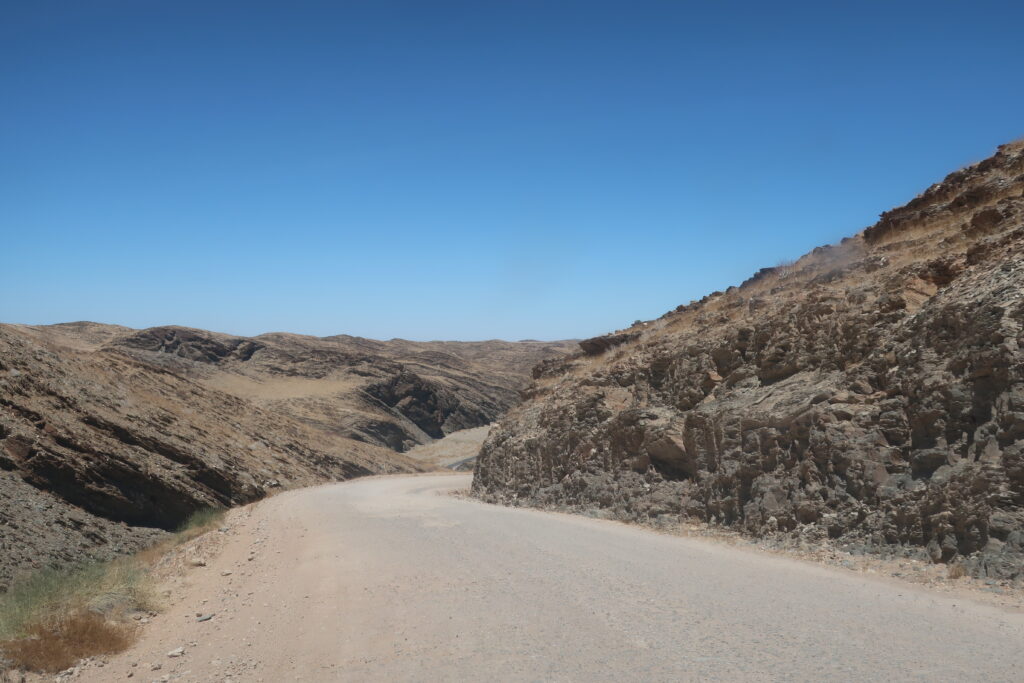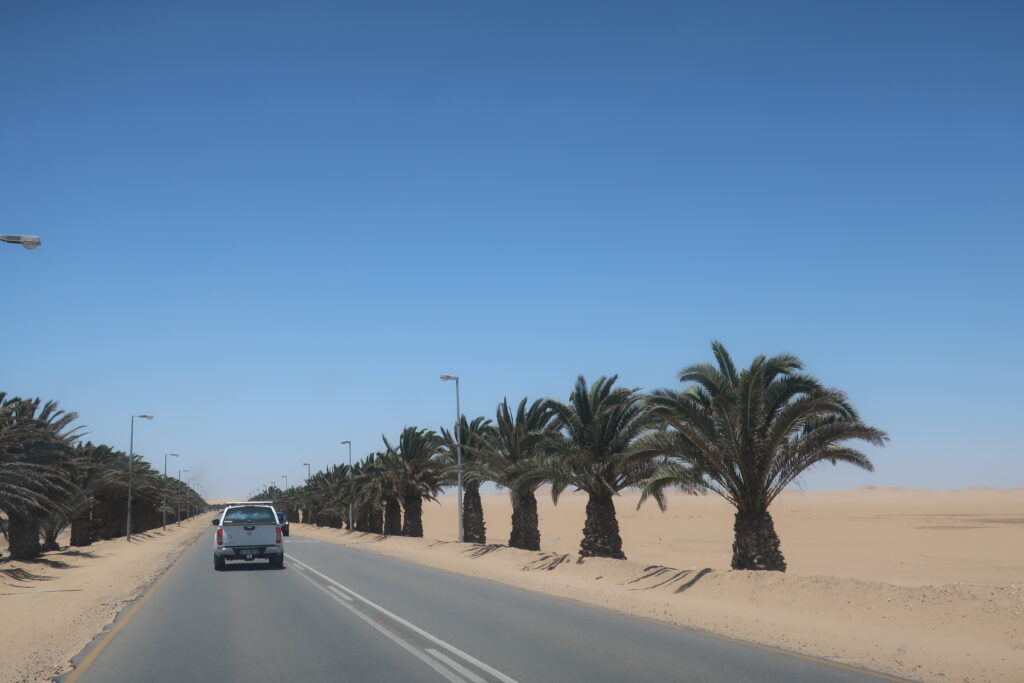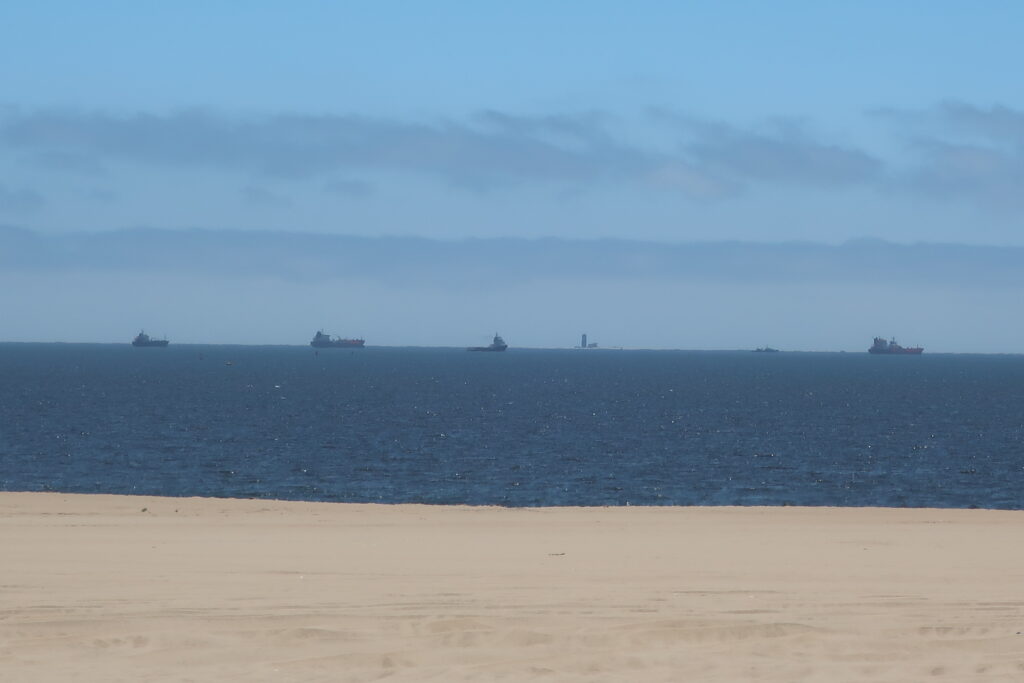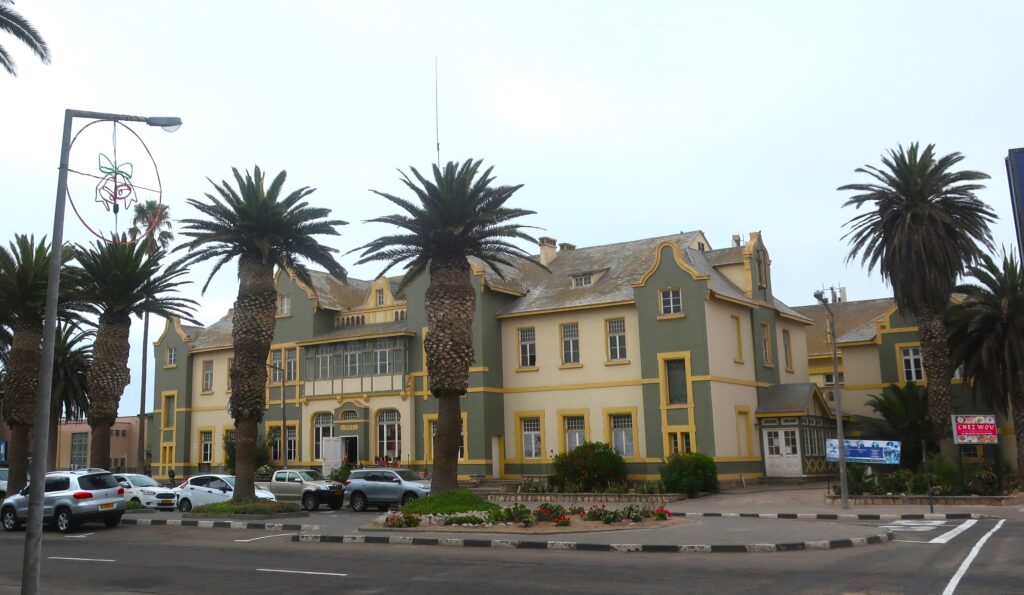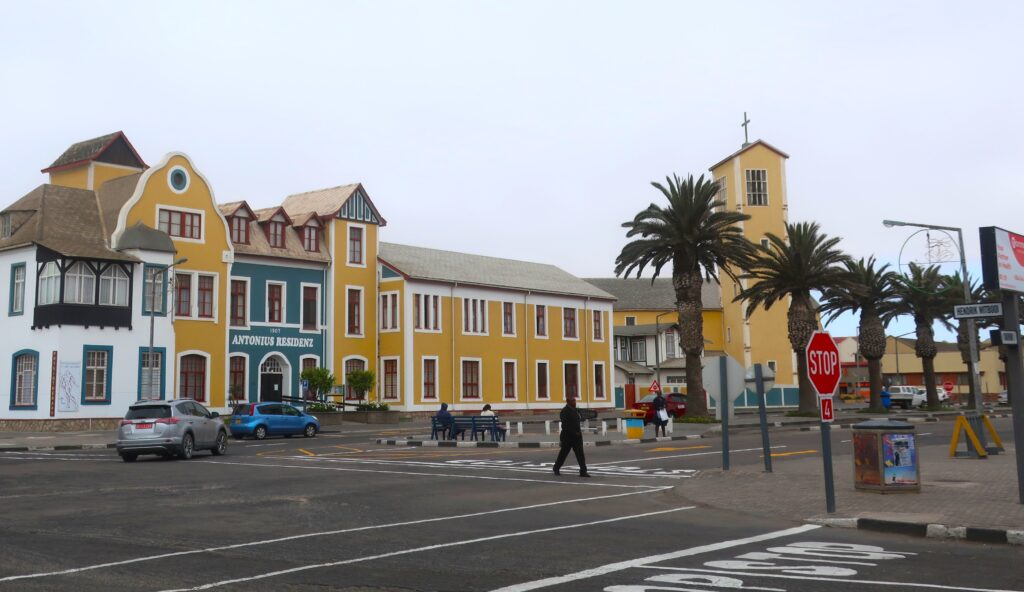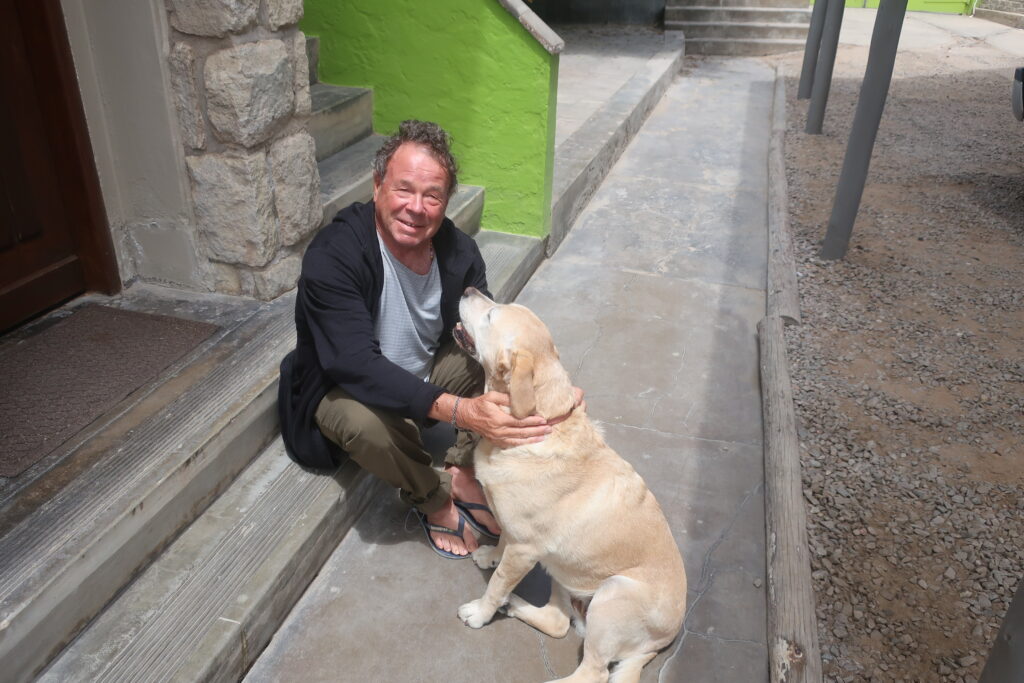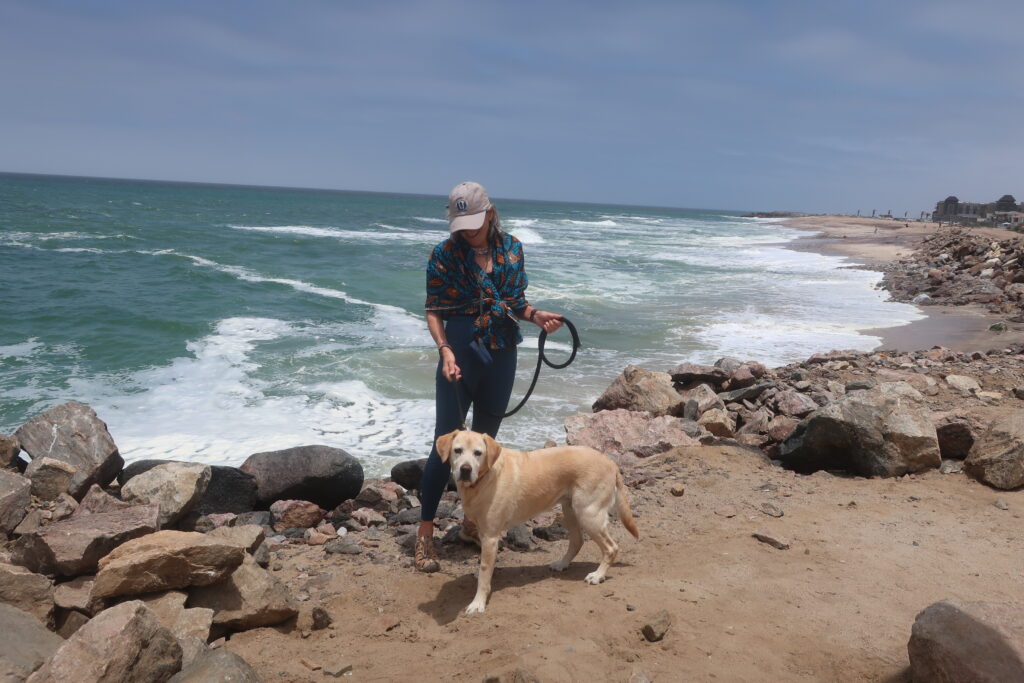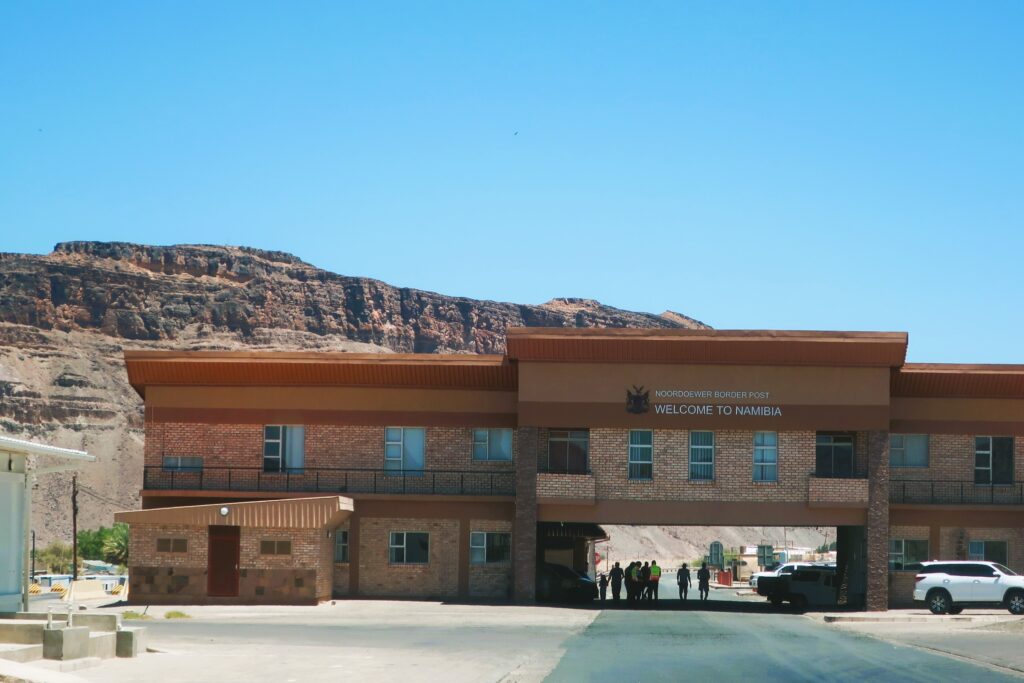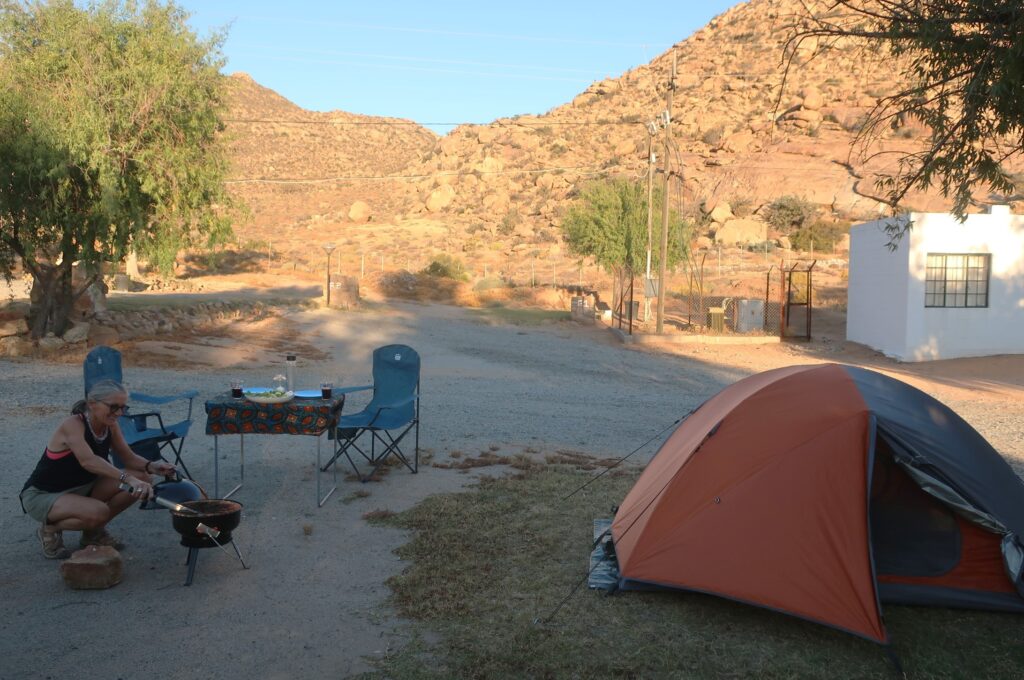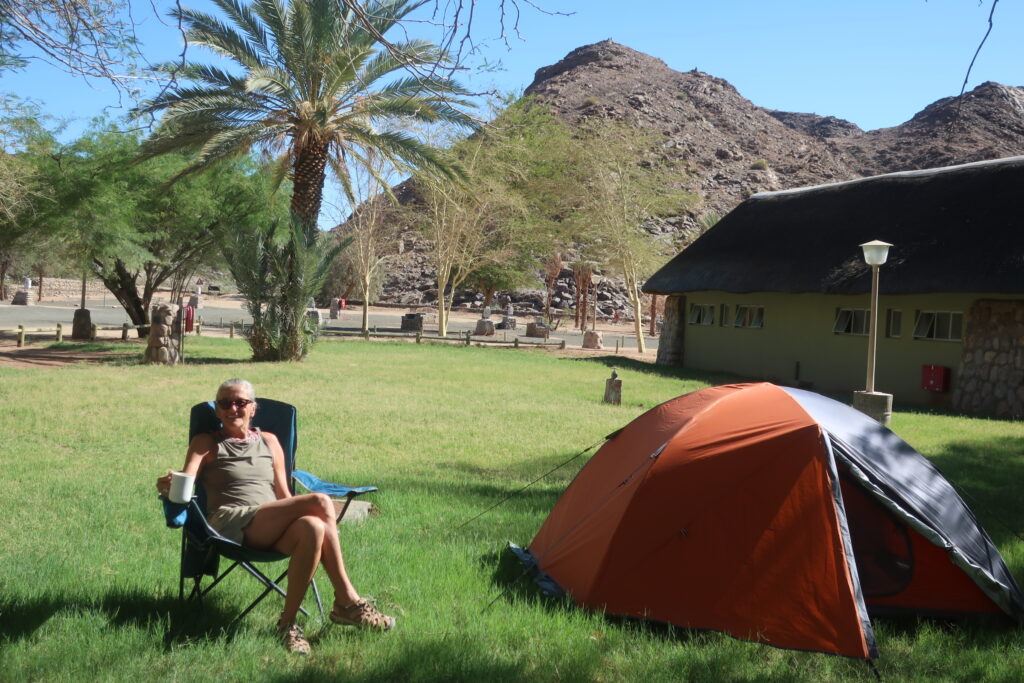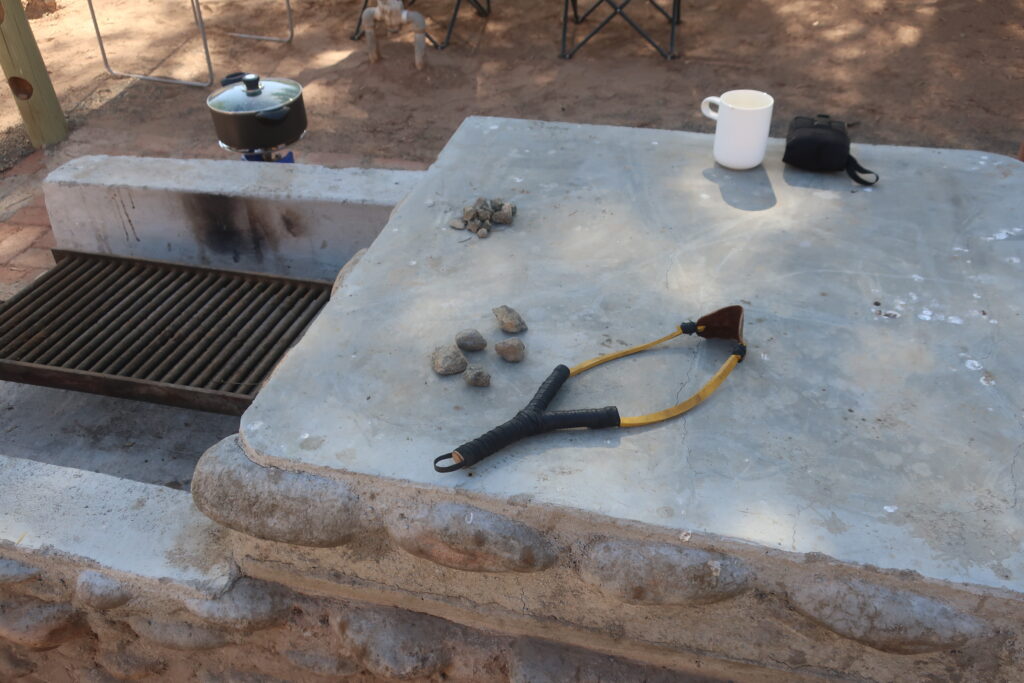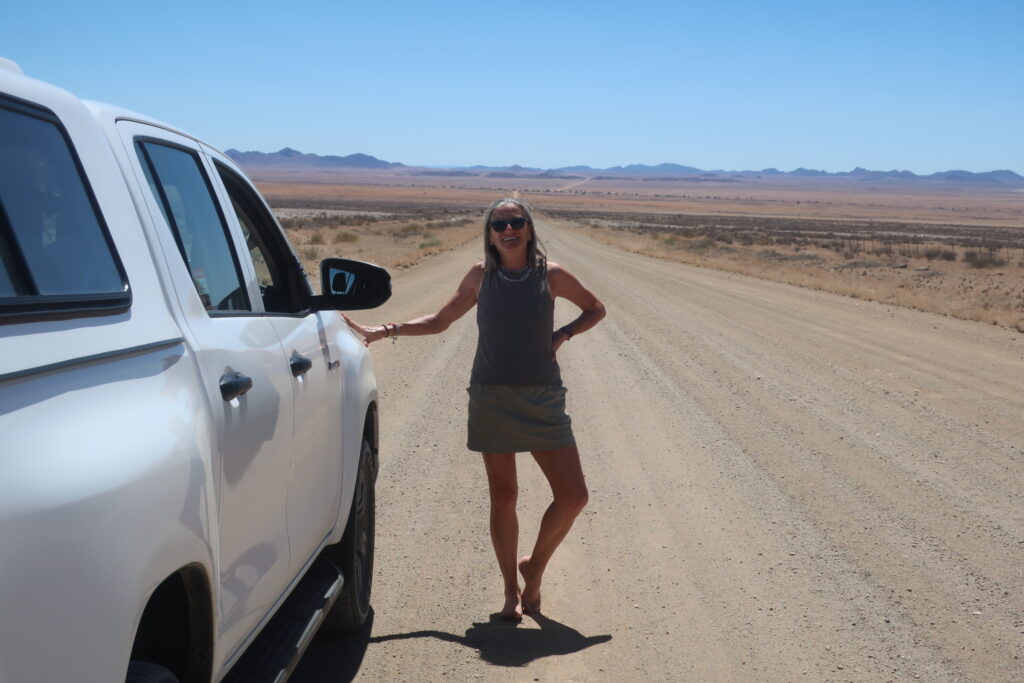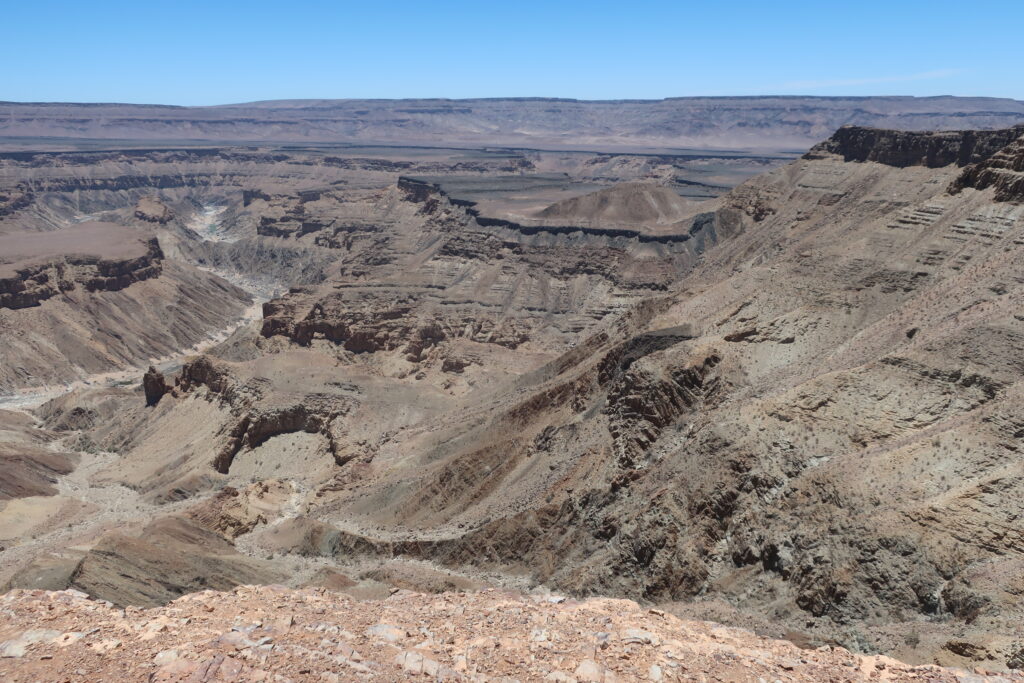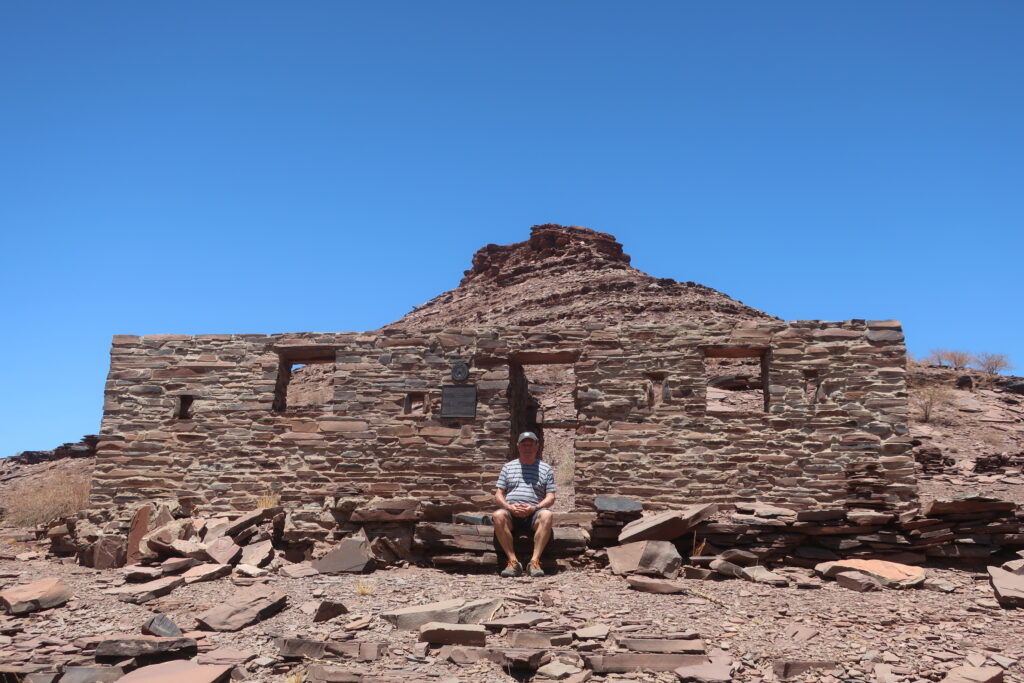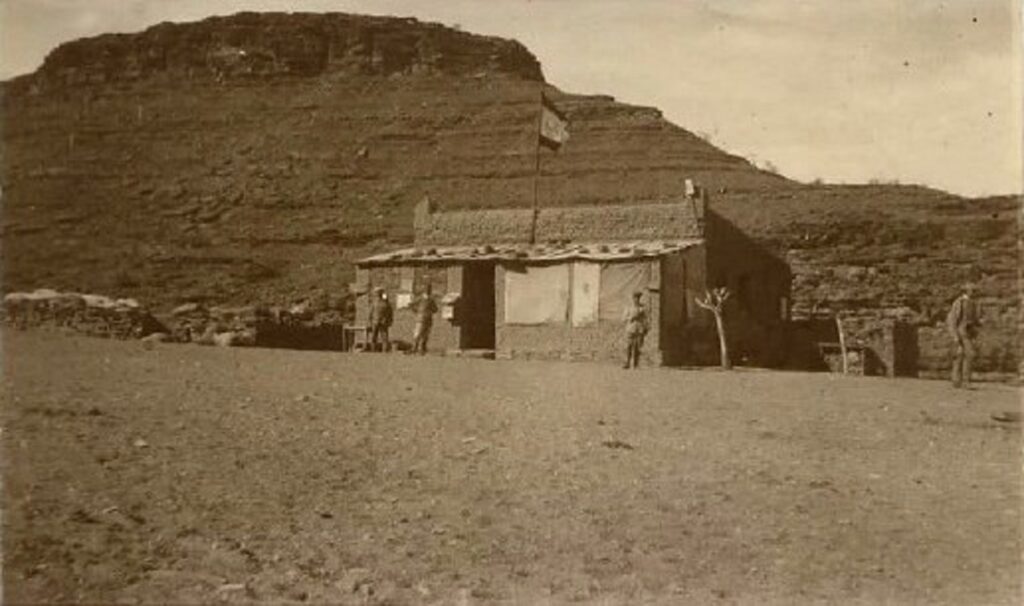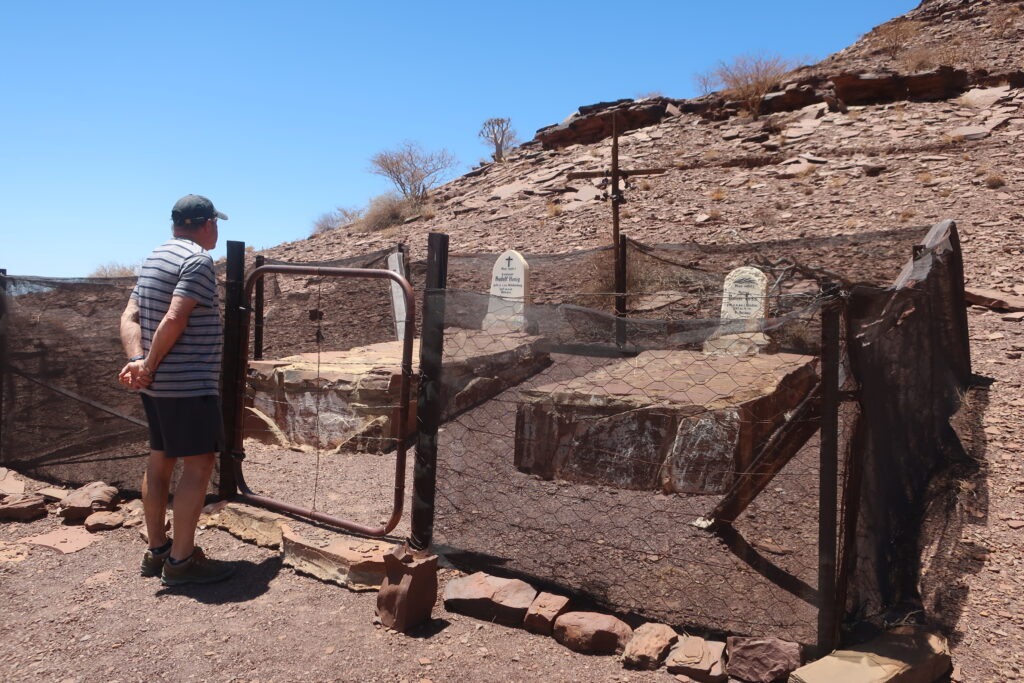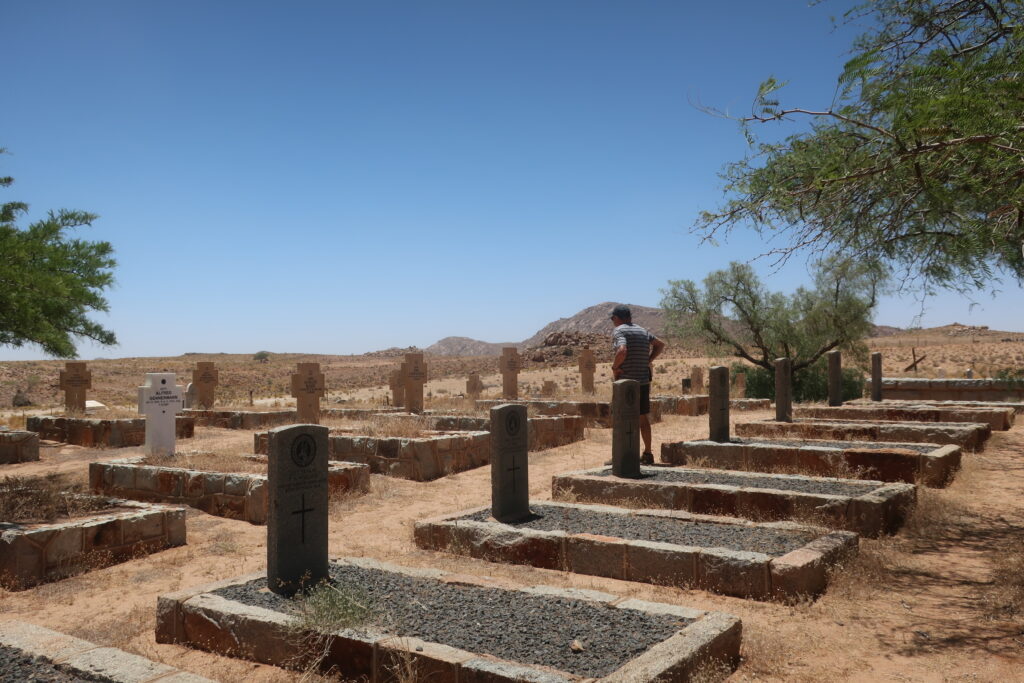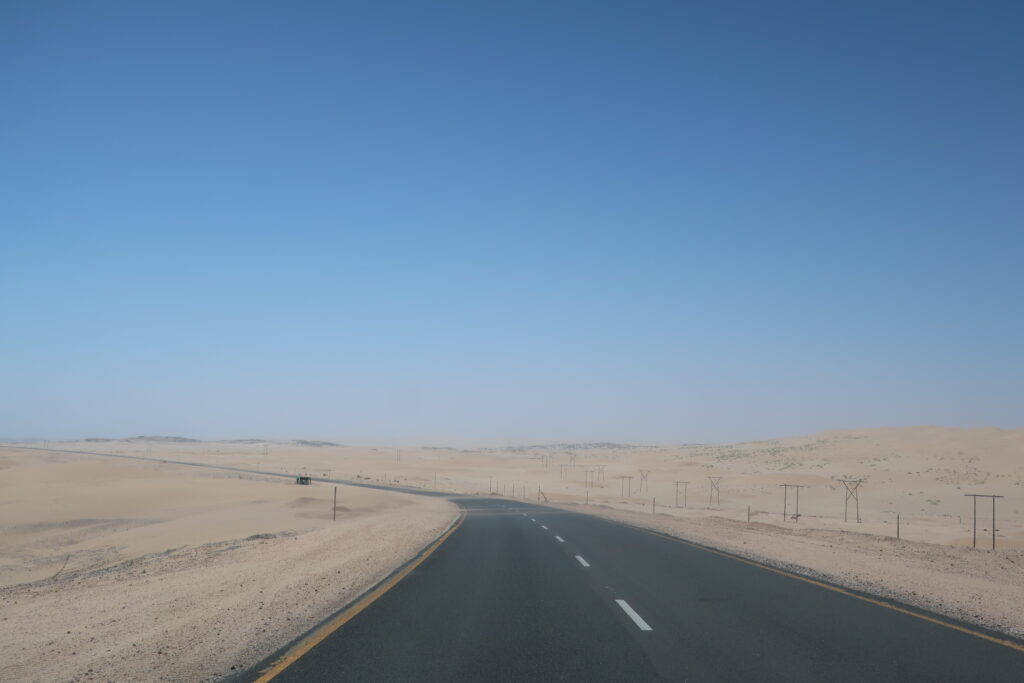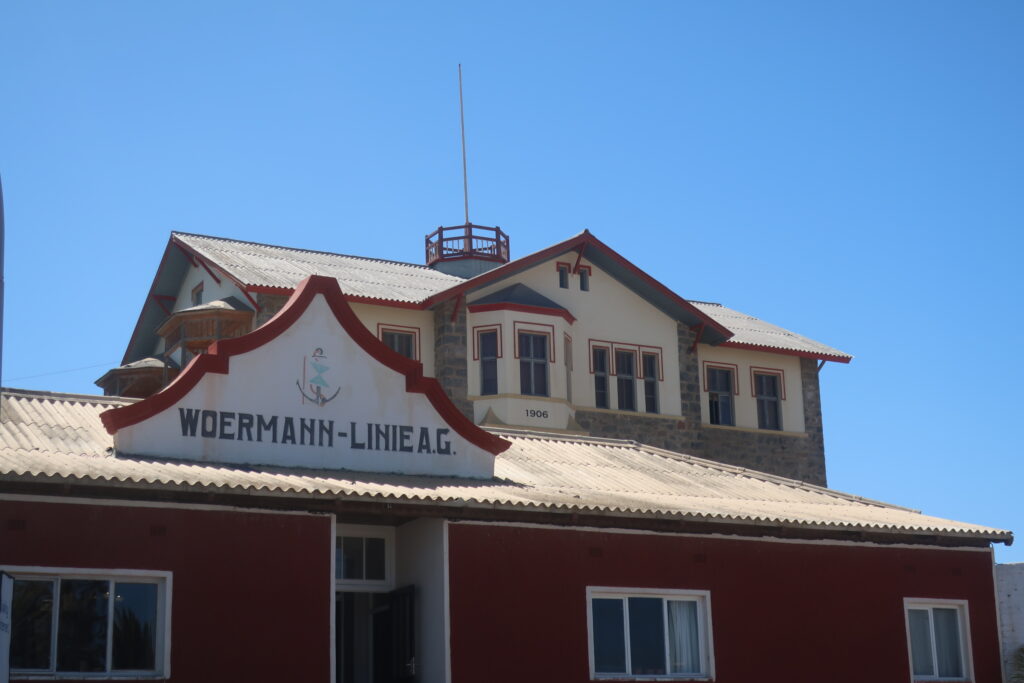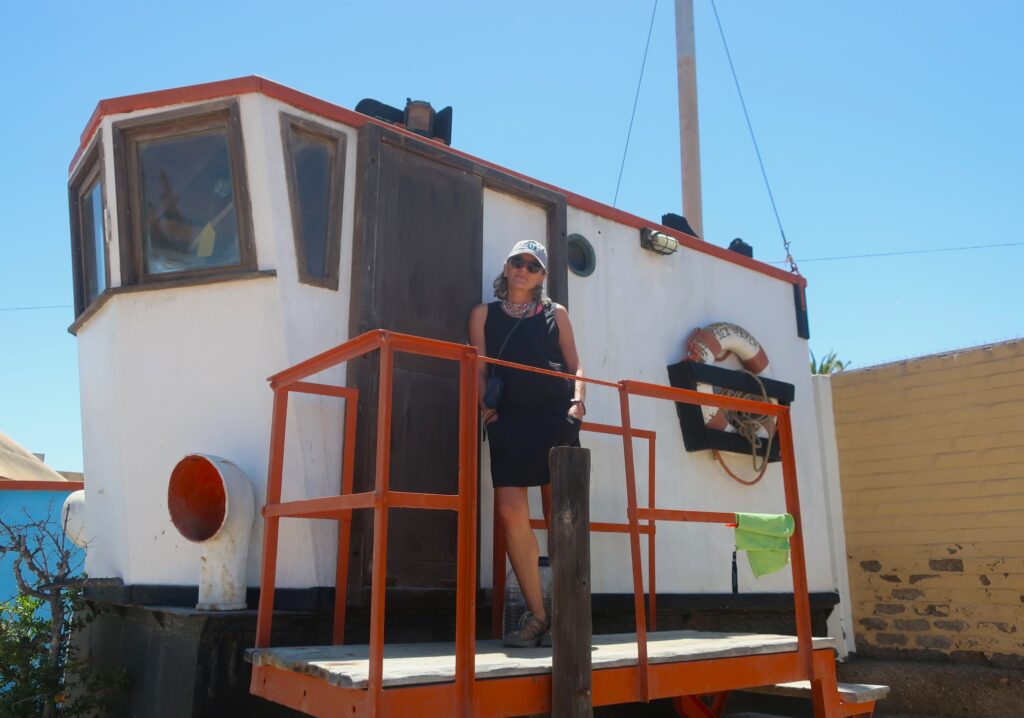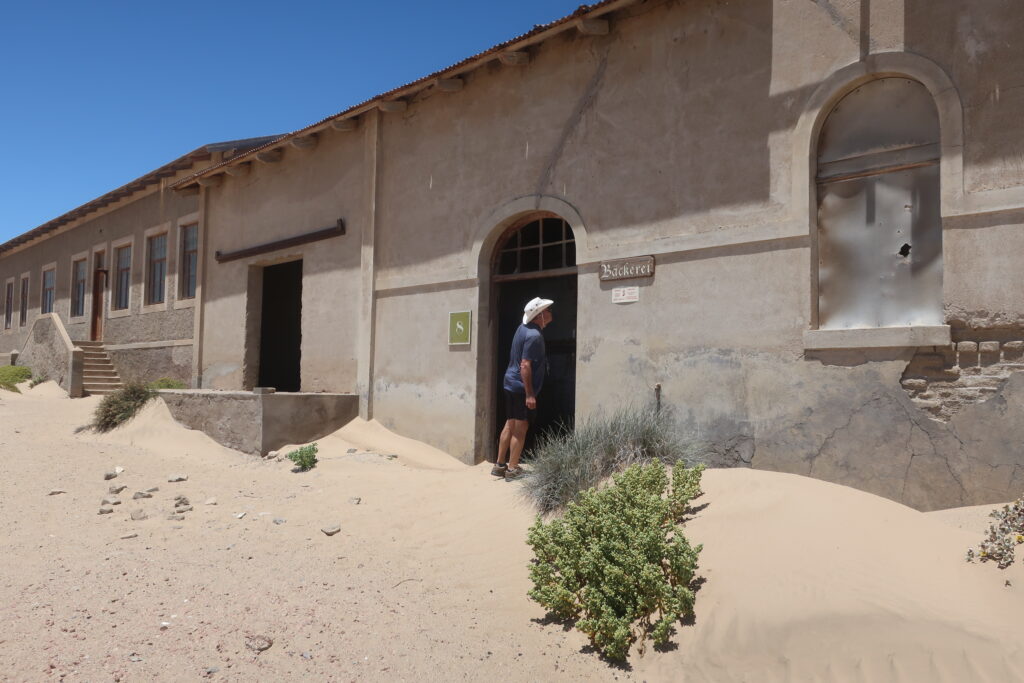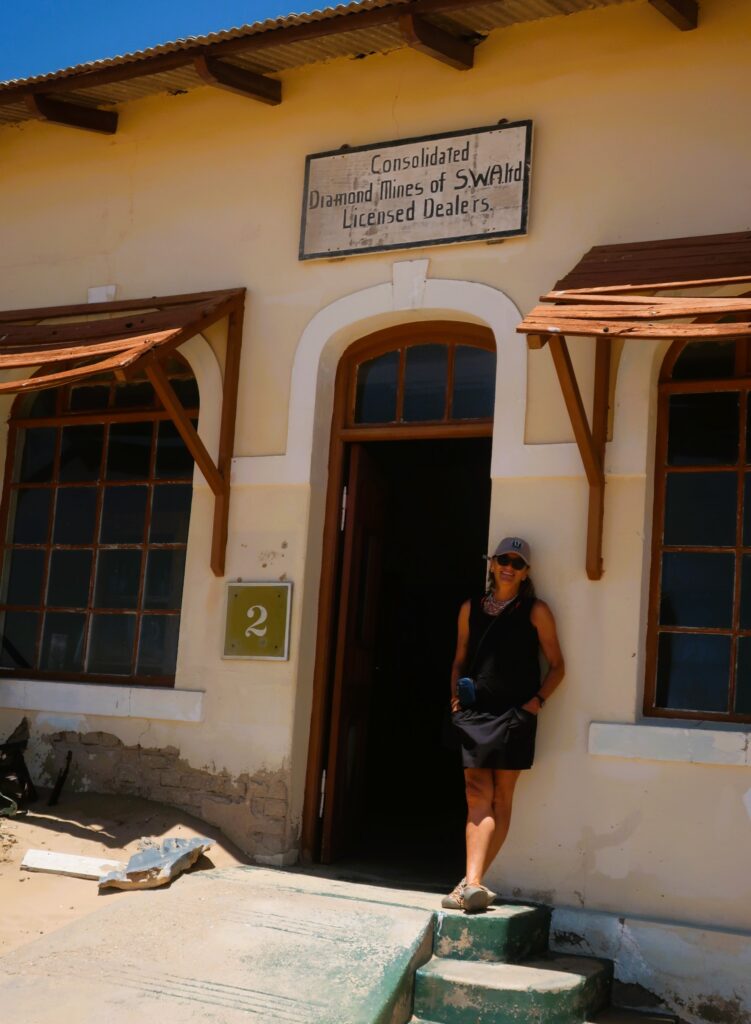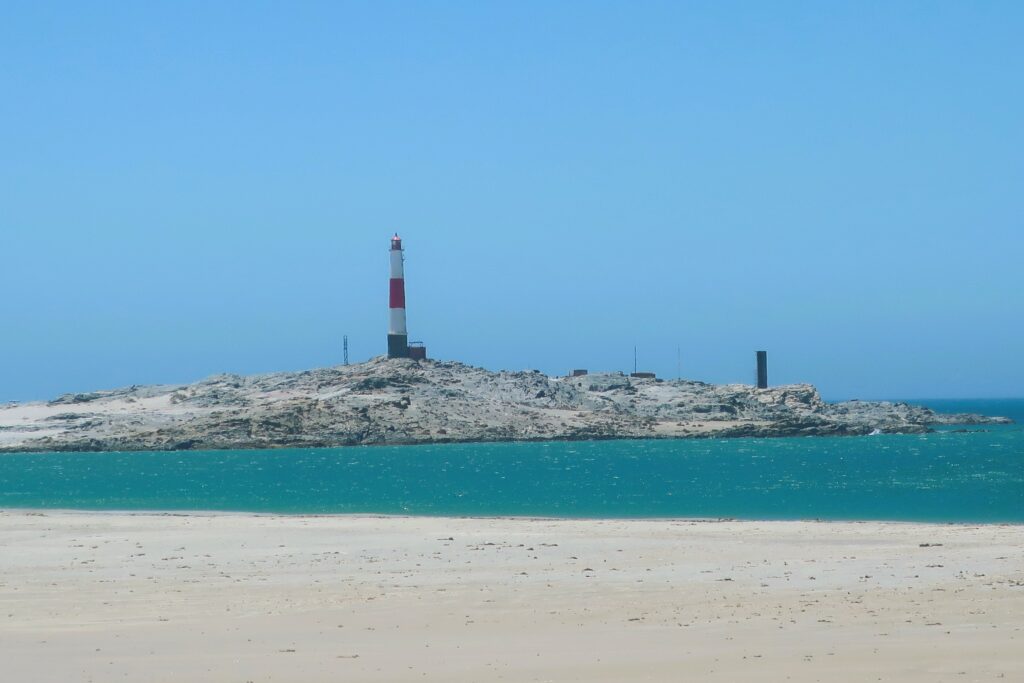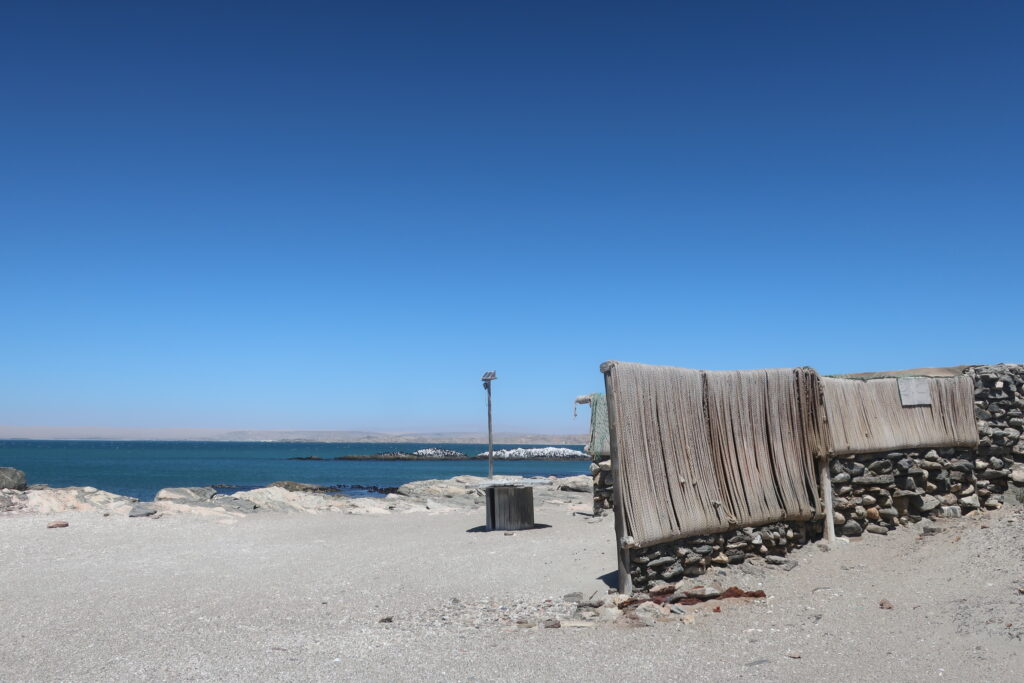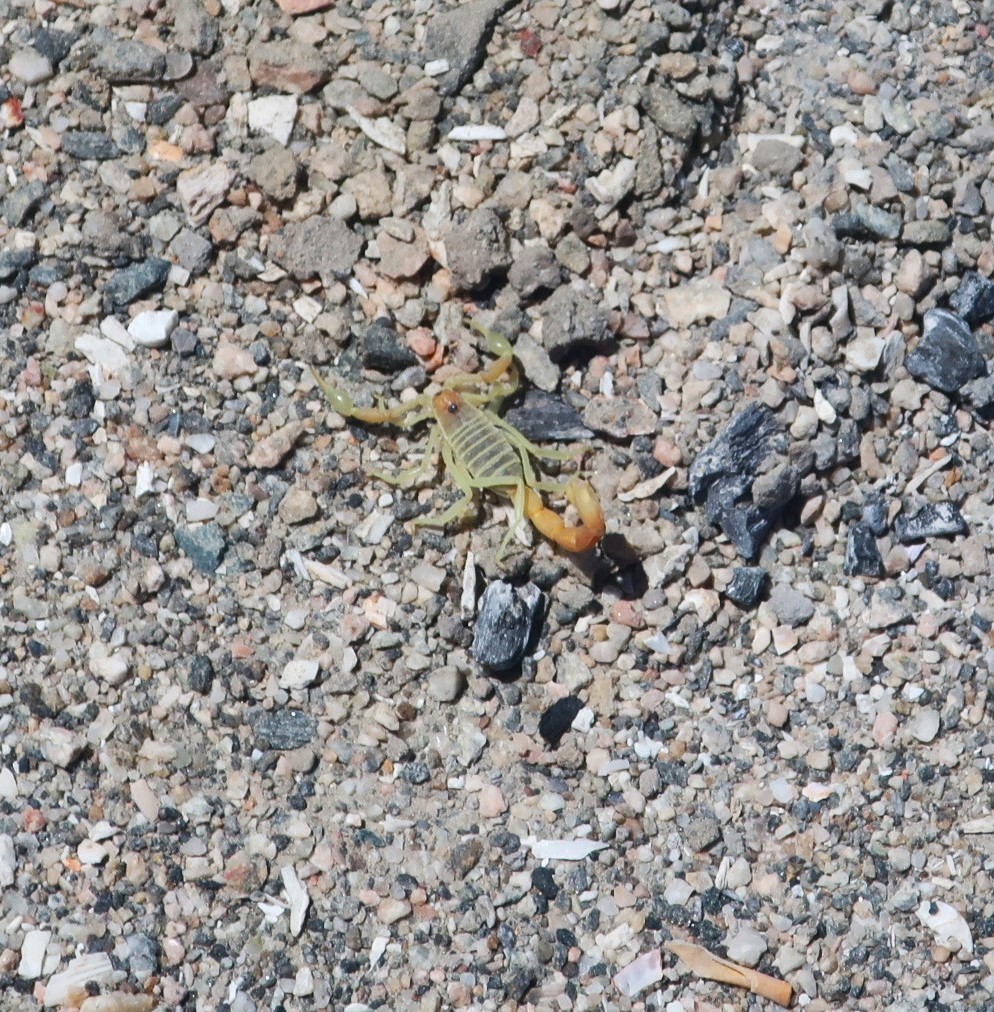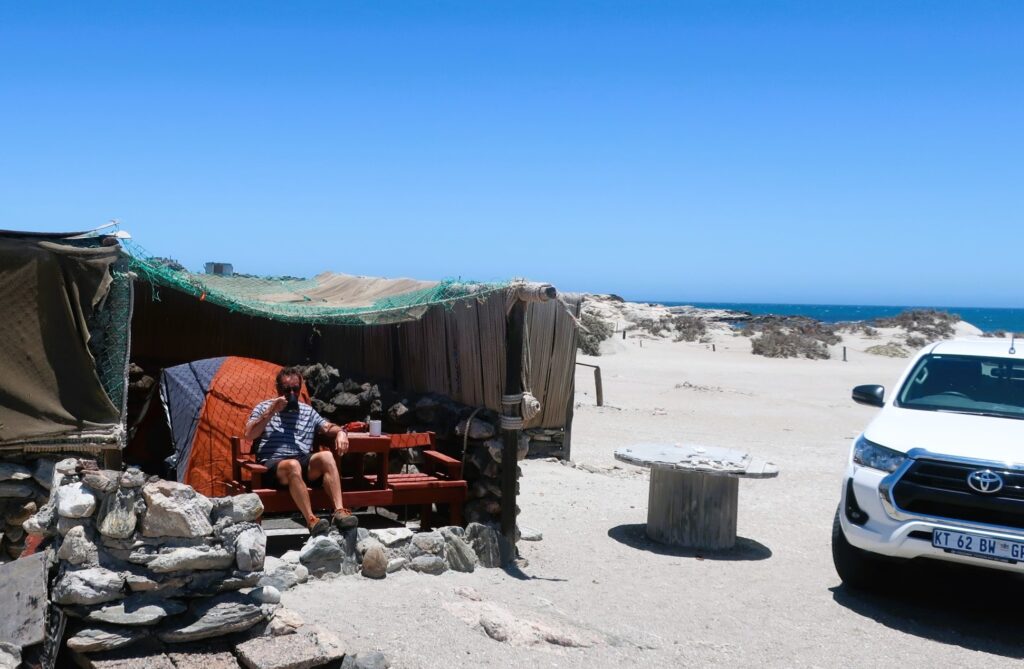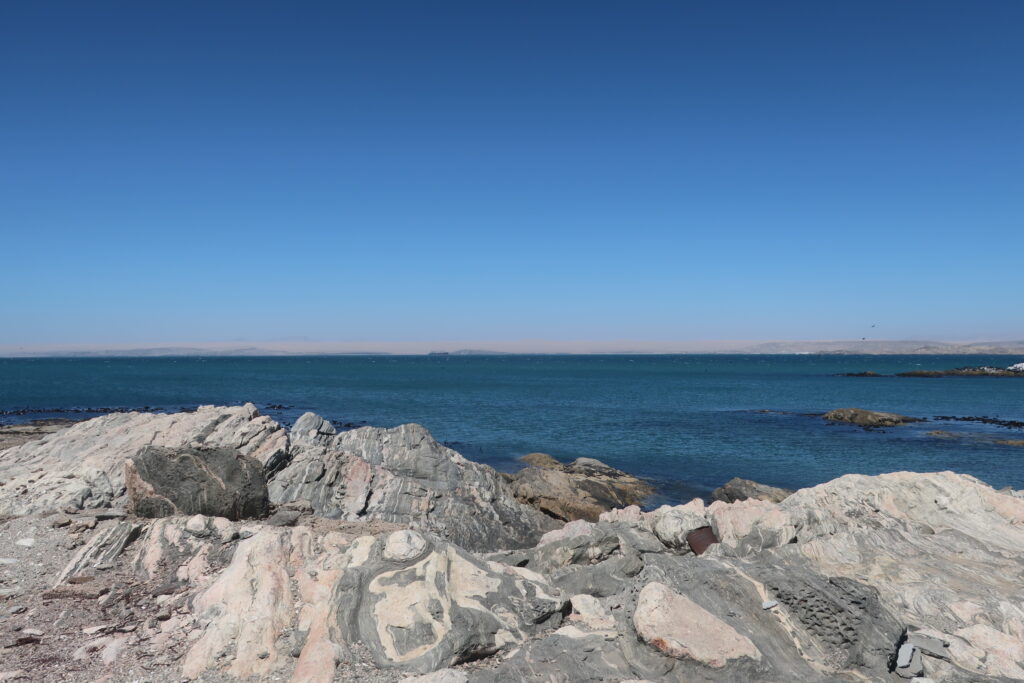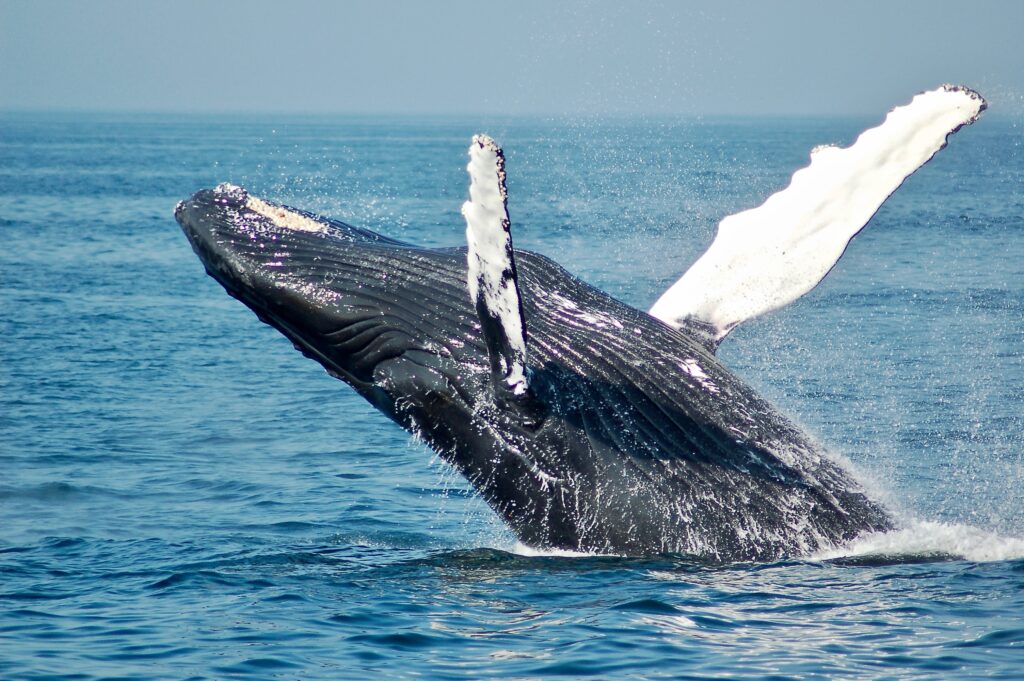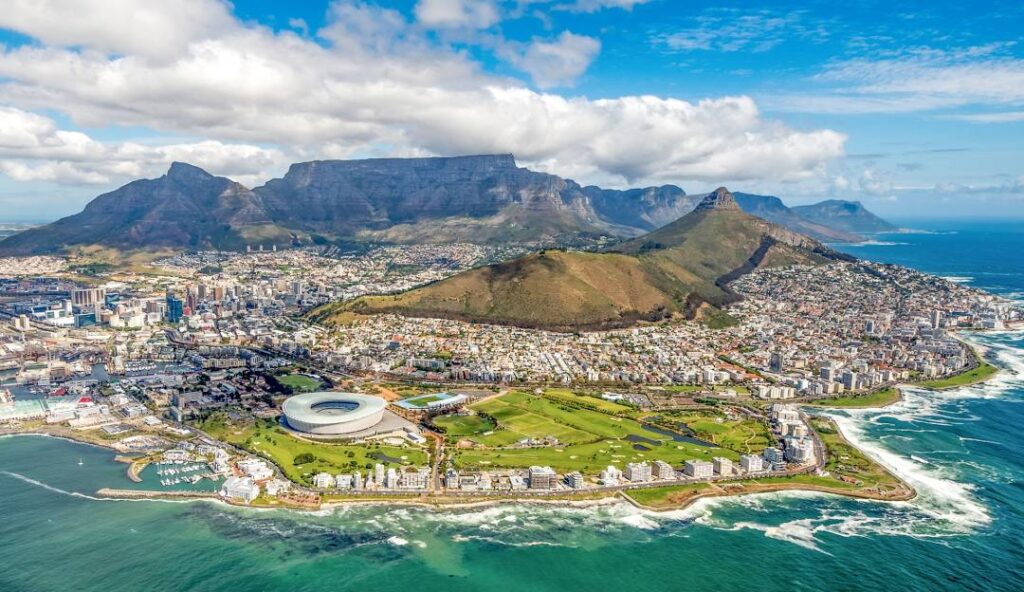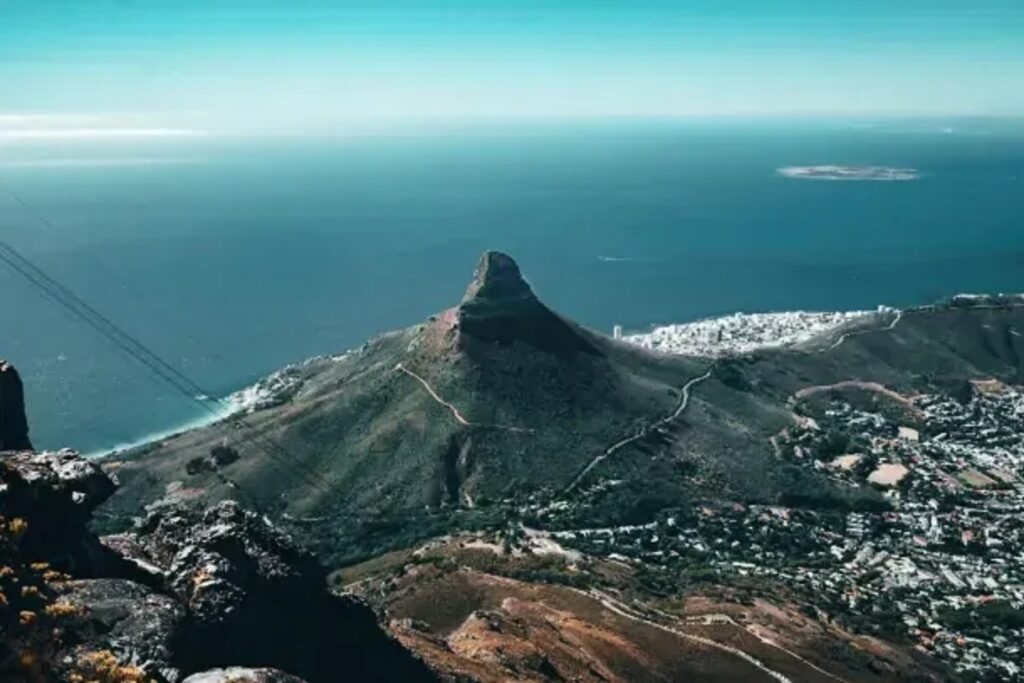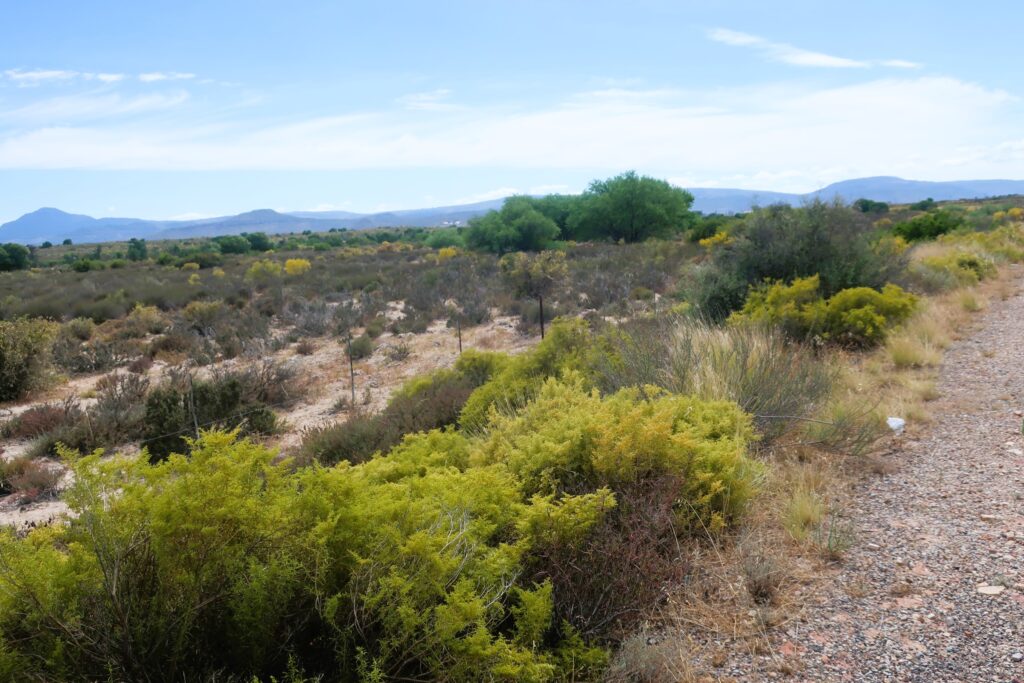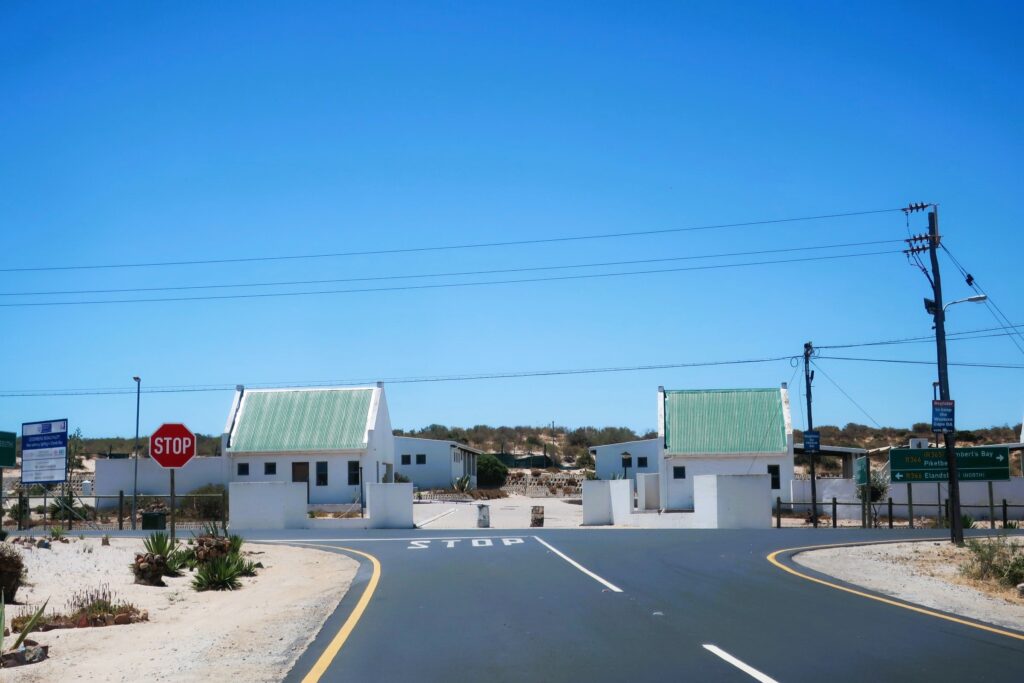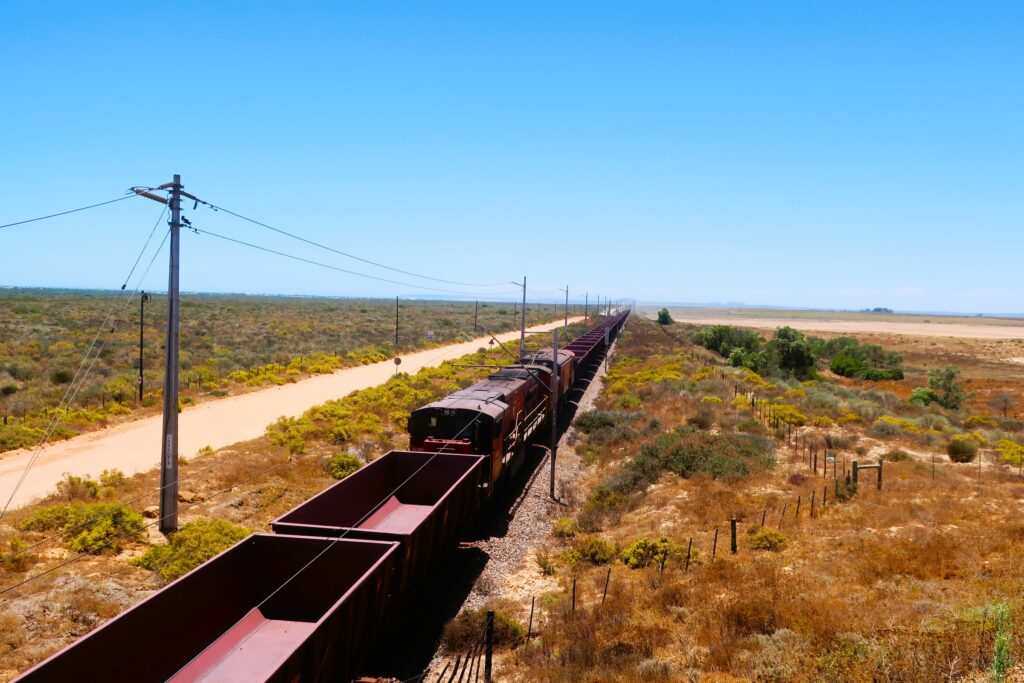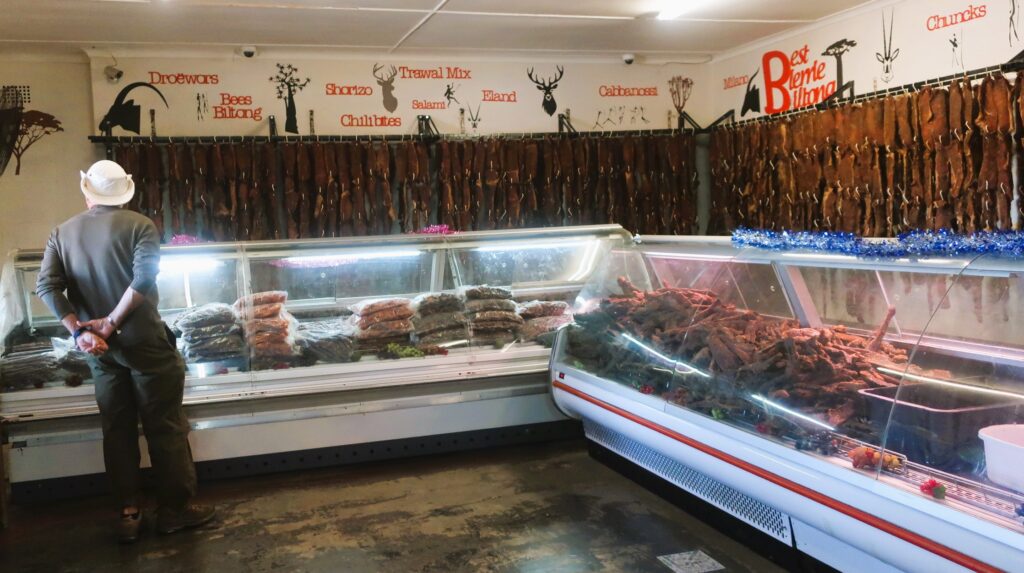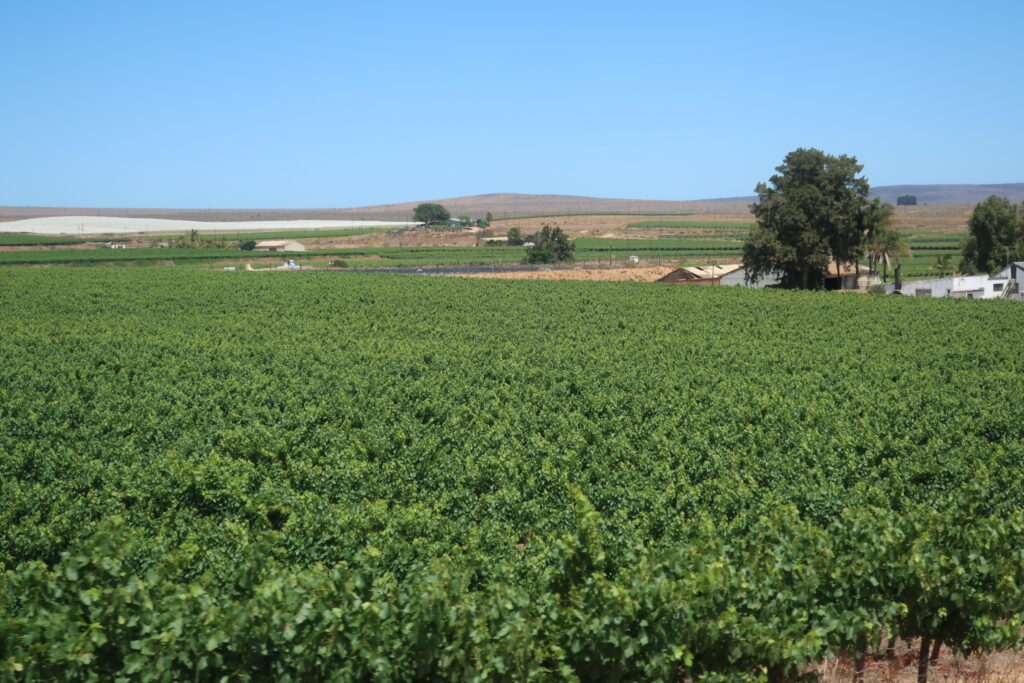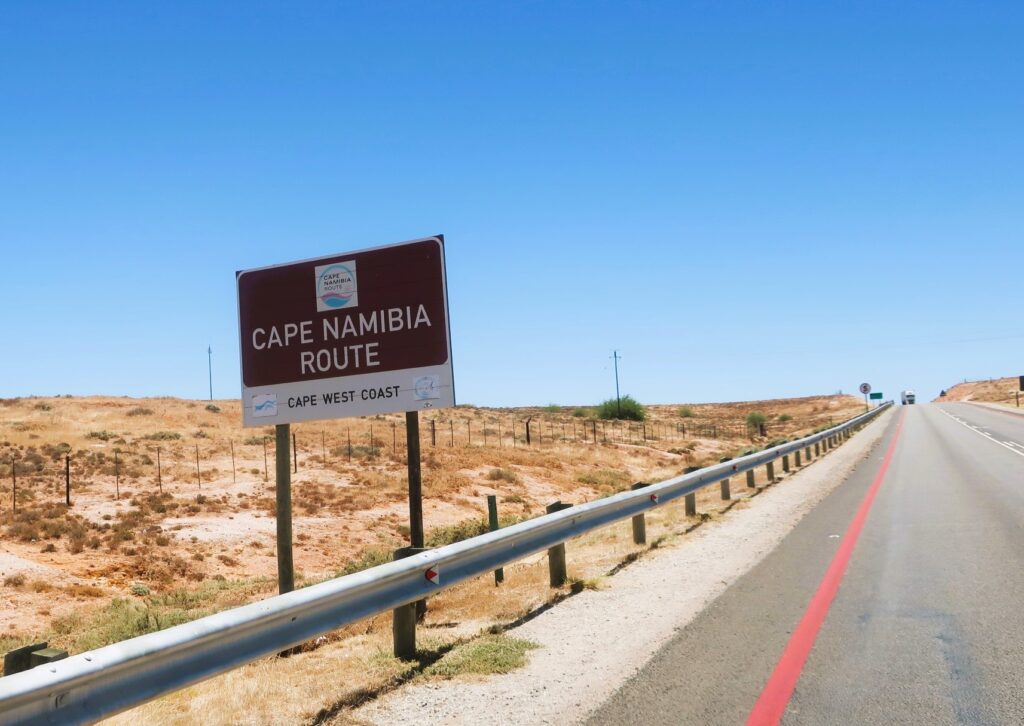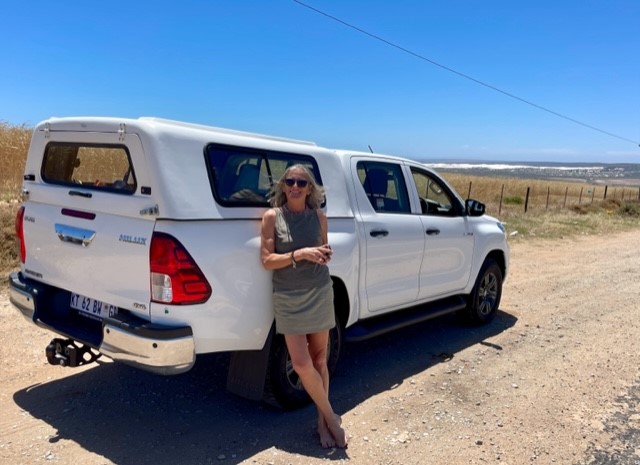We have had a few minor setbacks recently. But let’s proceed.
First, happy holidays to everyone at home! We think about you all the time.
We spend Christmas in Etosha National Park. The first few days, we stay at a campground a few kilometres from the park gate. While there, we are lashed by a sudden cyclonic storm that brought down waves of driving rain and gale-force winds.
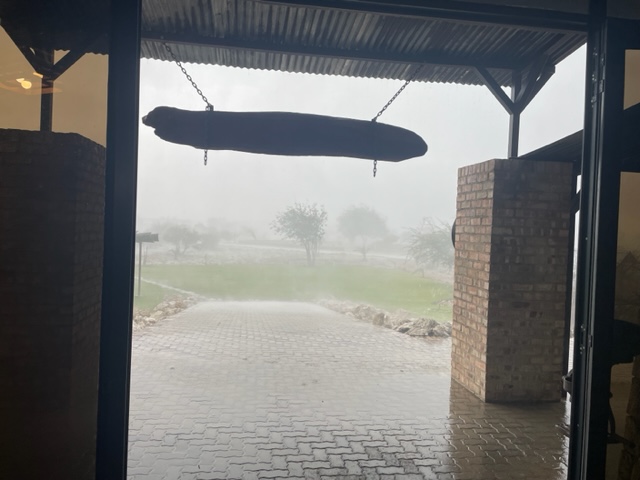
Certainly not what we’re used to recently. Among the casualties: our poor tent now looks like it’s been through the wars, being patched up with duct tape. Also, all of the cables for our electronics were left out and thoroughly waterlogged. Some are damaged beyond repair, like the (one-of-a-kind) charging cable for our laptop. Hence the delay in blog-posting. See you in another life, charging cable.
Anyway, going back a few weeks: we drive up the coast on our way to Skeleton Coast National Park. We go seventy kilometres out of our way to camp in a wilderness campsite run by the Namibian Save the Rhino Trust.
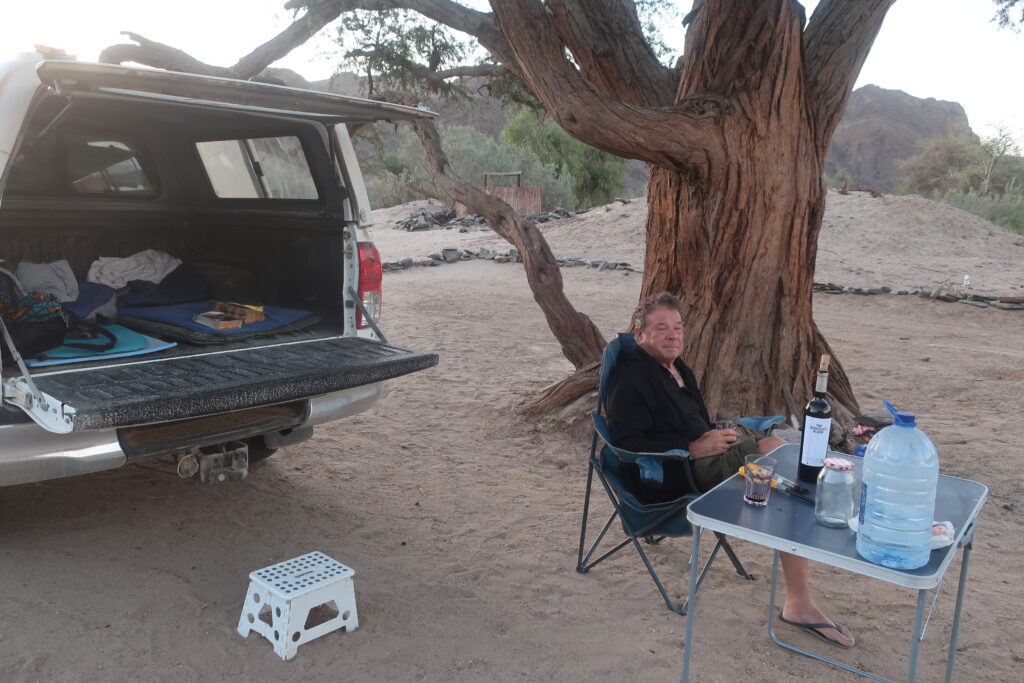
The last few kilometres run along a narrow trail of sharp rocks.
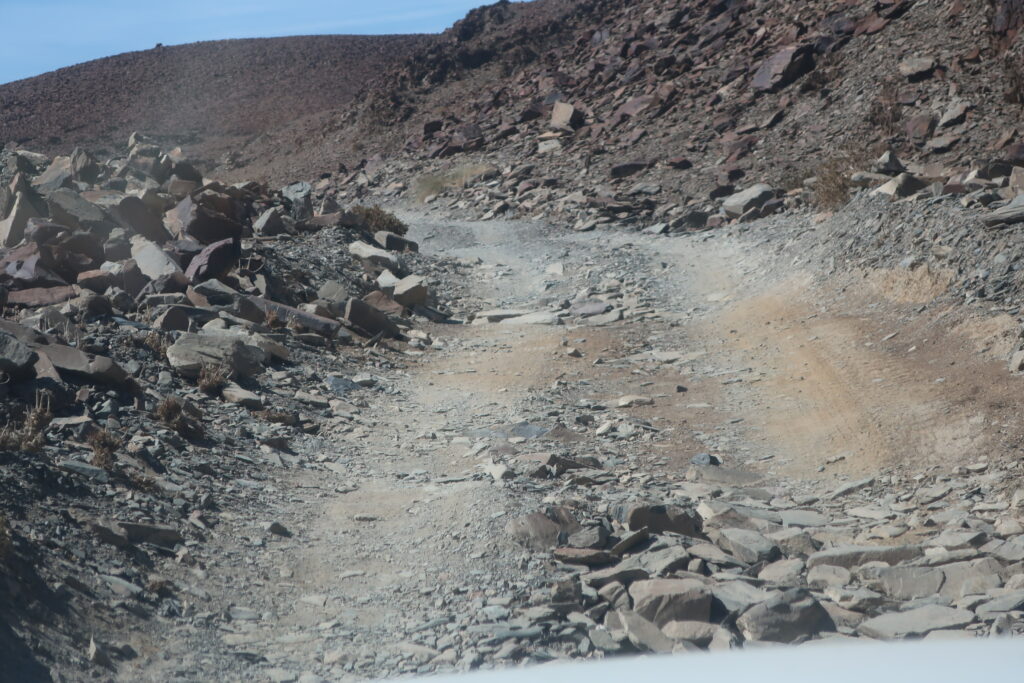
There are no fences.
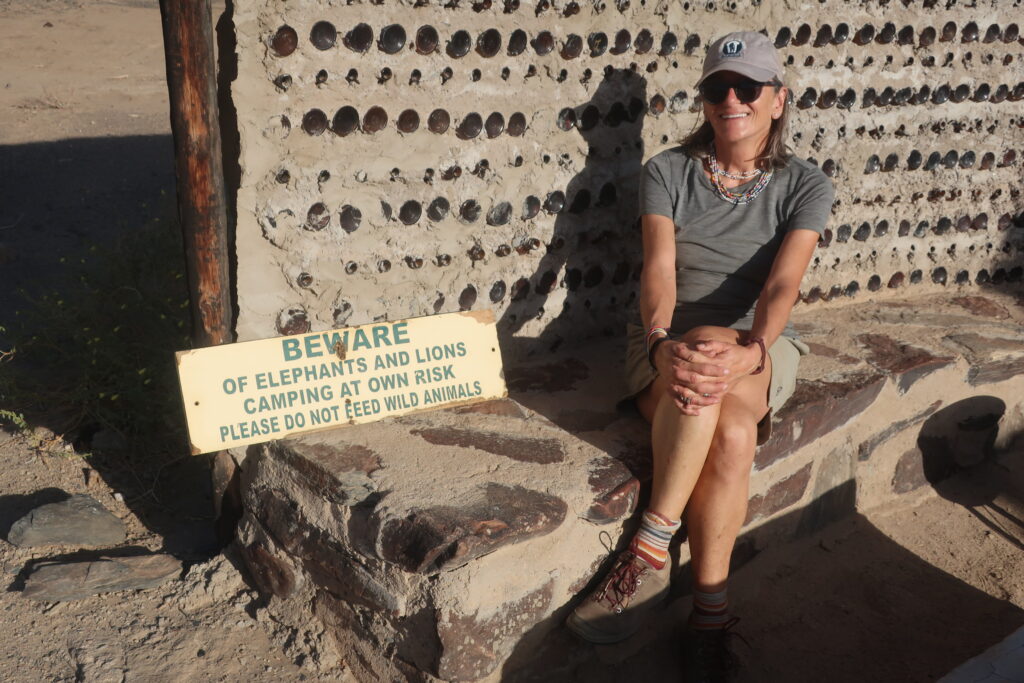
We take the unusual step of sleeping in the back of the truck. It’s not very comfortable.
On the road to this place, we see a lot of Welwitschia plants. These bizarre plants can be over a thousand years old. They really look prehistoric.
They are also the national plant of Namibia. If you look at the Namibian coat of arms in the previous entry, you’ll see a stylized Weltwitschia plant under the shield.
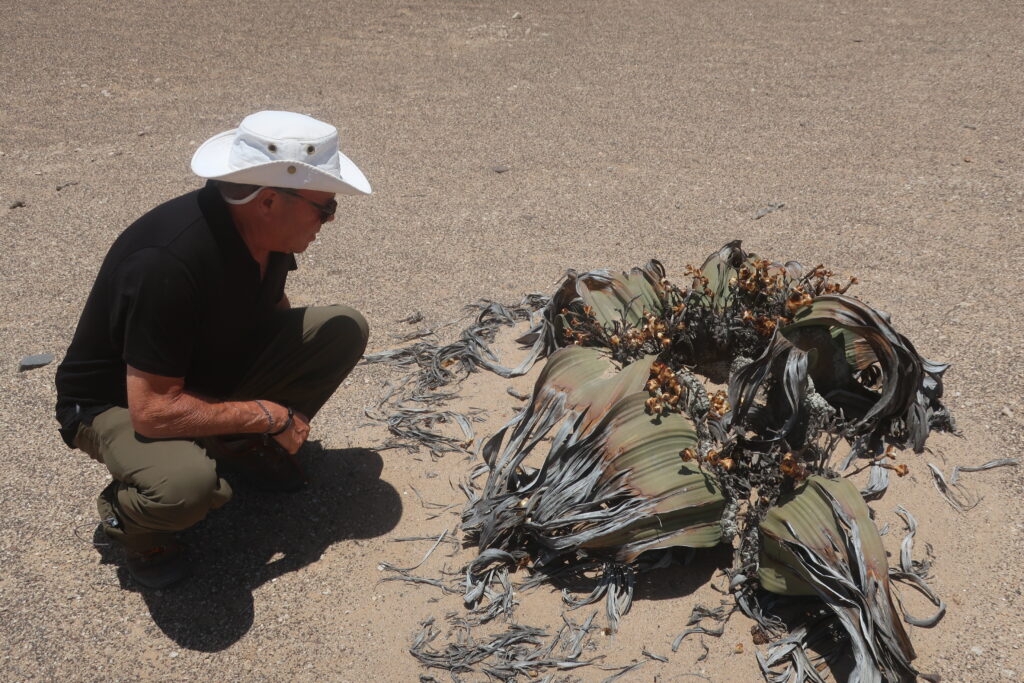
So after backtracking another seventy kilometres to the main road – ‘main road’ being still a generous description – we get a flat tire, no doubt from the sharp rocks of the Save-the-Rhino camp. The tire is ripped to shreds. We can’t figure out how to get the spare out from under the vehicle. Fortunately for us, a South African family pulls over and swiftly changes the tire. The spare is also flattish. Of course, this family has an industrial-strength air compressor. Once again, we are saved by the kindness of strangers.
So we wind up returning to Swakopmund to buy a new tire and get the spare repaired. (It turned out to have a nail in it.) This is not so bad, we get to see the dog Mischa again!
So, we set out again for the Skeleton Coast National Park. Skeletons of ships, that is.
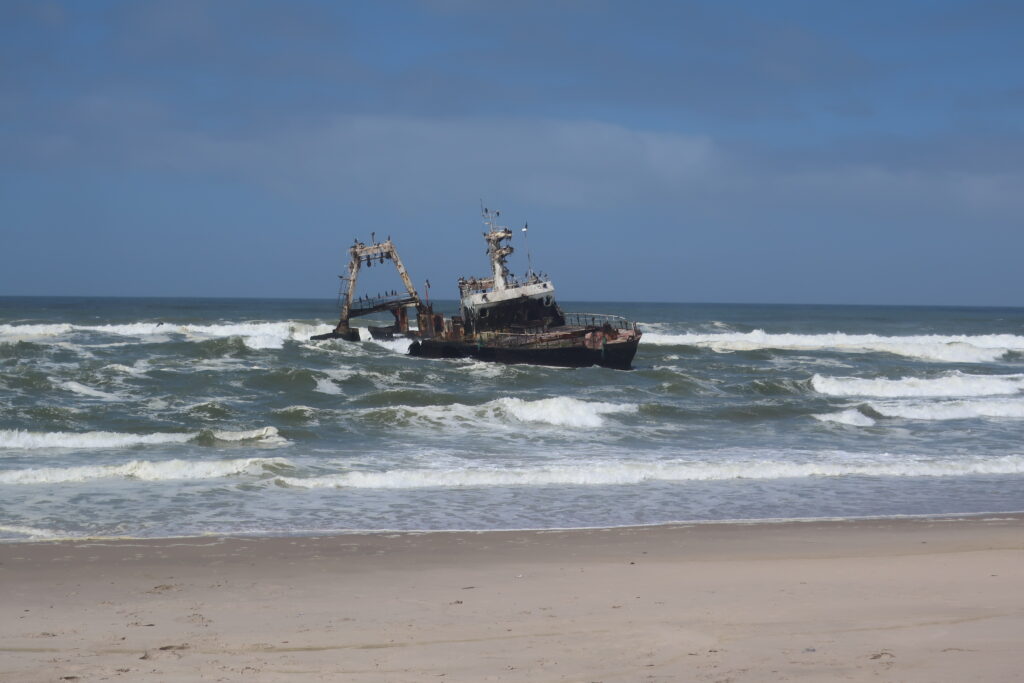
According to Shipwreck World:
‘MFV Zeila (L758) was a South African wetfish trawler that was sold as scrap metal to an Indian company by Hangana Fishing of Walvis Bay and got stranded 20km North from Wlotzbaken, Namibia on the 26th August 2008 when it came loose from its towing line while on its way to Bombay, India shortly after it left Walvis Bay.’
We pass Cape Cross, home of the Cape Cross seal colony. There can be up to a hundred thousand seals here.
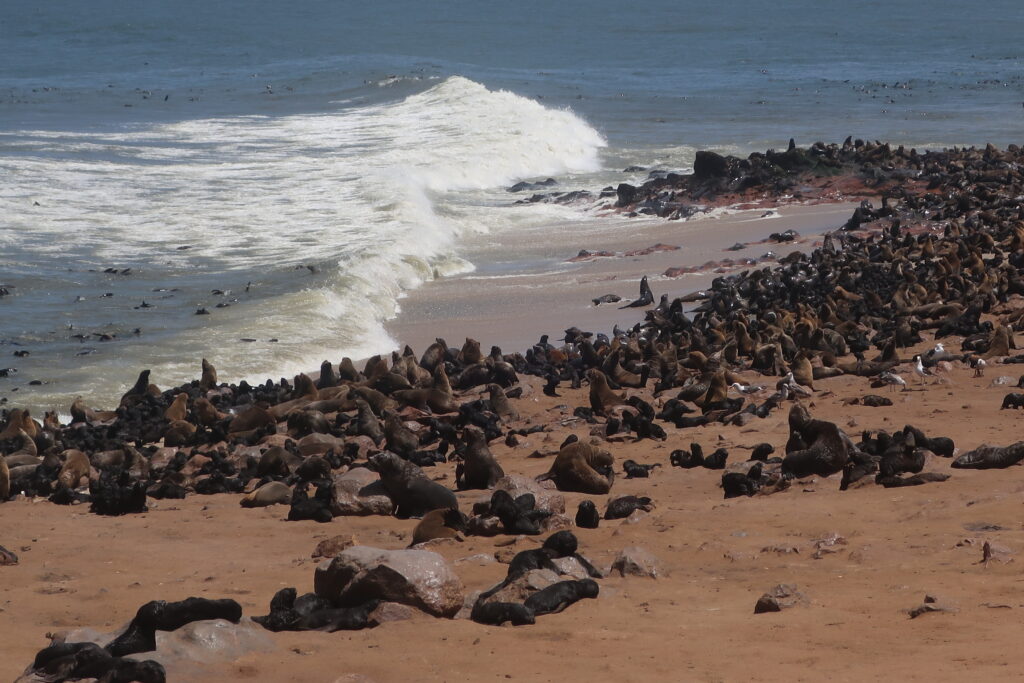
Because it’s breeding season, there are thousands of cute-as-a-button seal pups around. Unfortunately, there are also hundreds of dead seal pups as well, in varying states of decomposition. We find this so sad that we only stay for a few minutes. See you in another life, seal pups.
Cape Cross is so named because Diogo Cão, a Portuguese explorer, set up some crosses here in the 1480s.
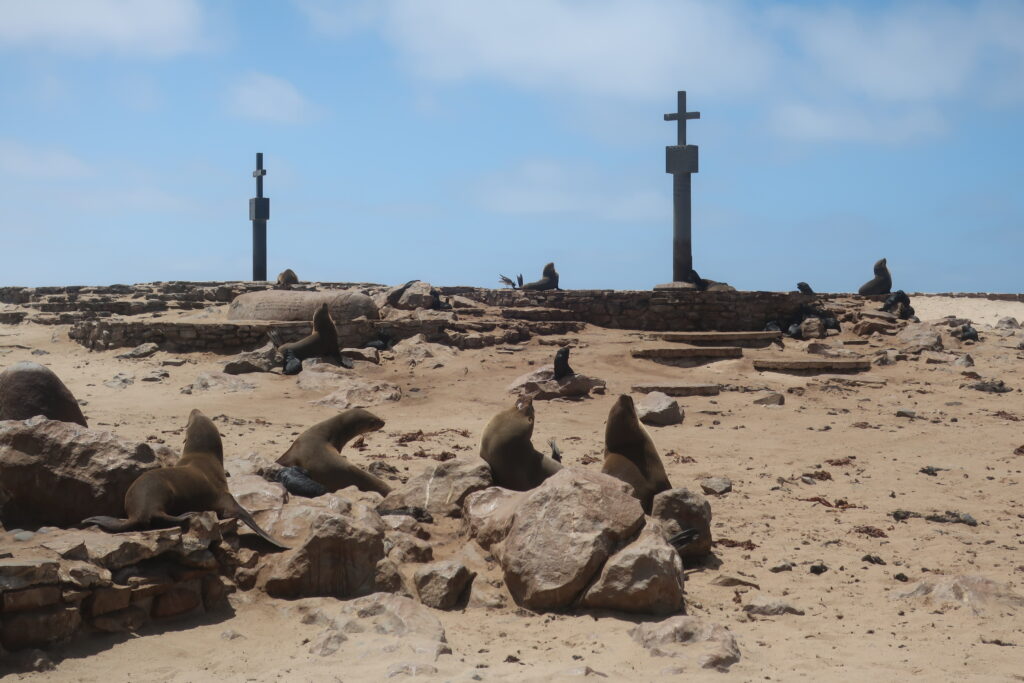
One of Namibia’s resources is salt. Lots of salt.
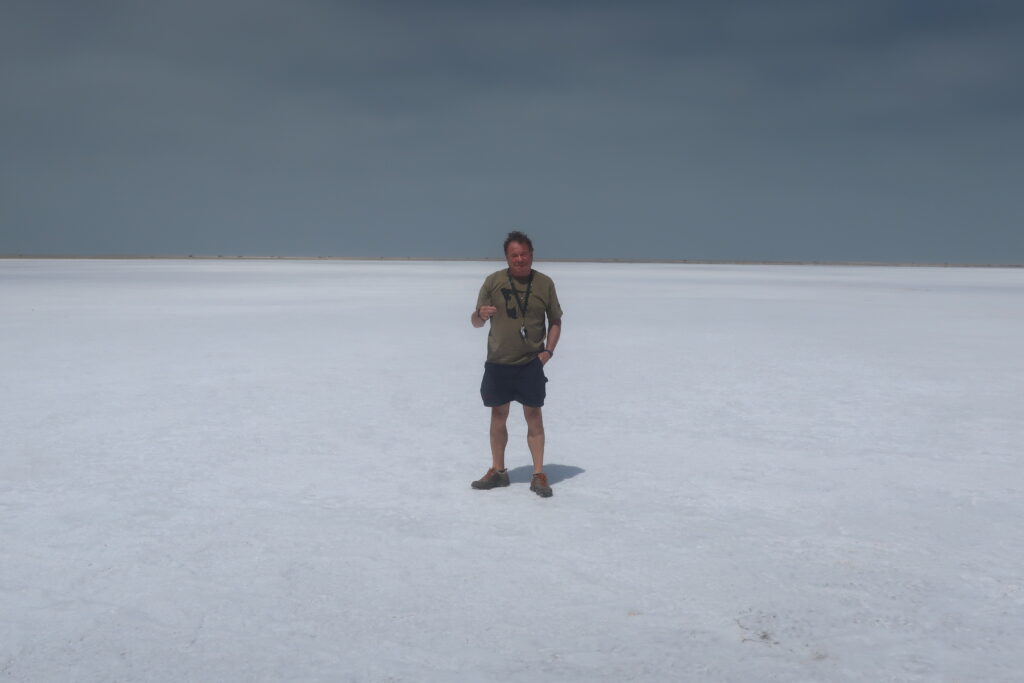
Here’s another wreck that’s accessible from the road.
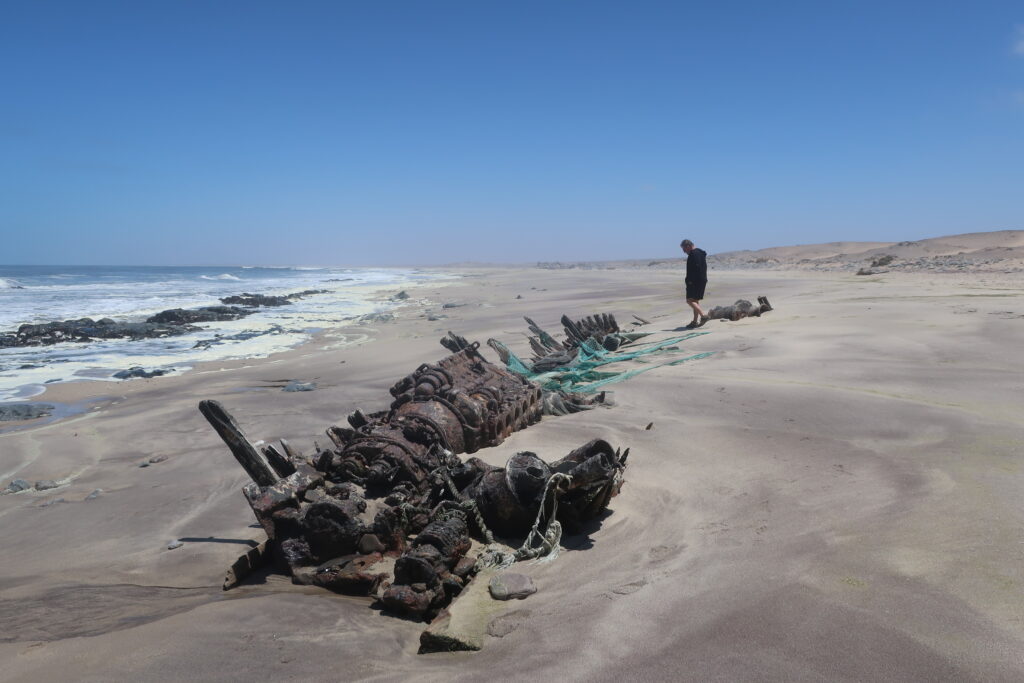
We come across the remains of an old oil rig from the 60s.
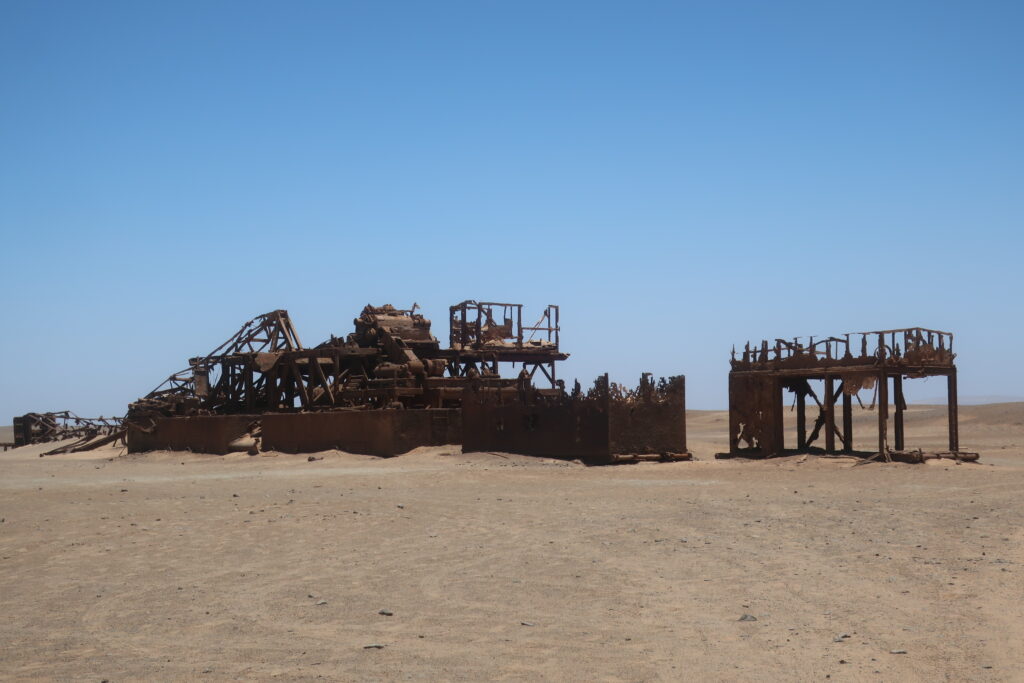
Any other contretemps? We had to make a considerable detour to Windhoek to fulfil the requirements of our vehicle rental that it be checked every 10,000 KMs.
All in all, nothing too serious. It’s almost New Year’s Eve – we’ll fill in more intervening activities soon.
Sight or Insight of the Day
Like everyone else, we’ve been getting ready for Christmas Day.
Maria likes the South African method of BBQ-ing, using a combination of charcoal and small bits of exotic African wood. So for Christmas, I thoughtfully gift her a bundle of artisanally-gathered (by me) Mopane twigs.
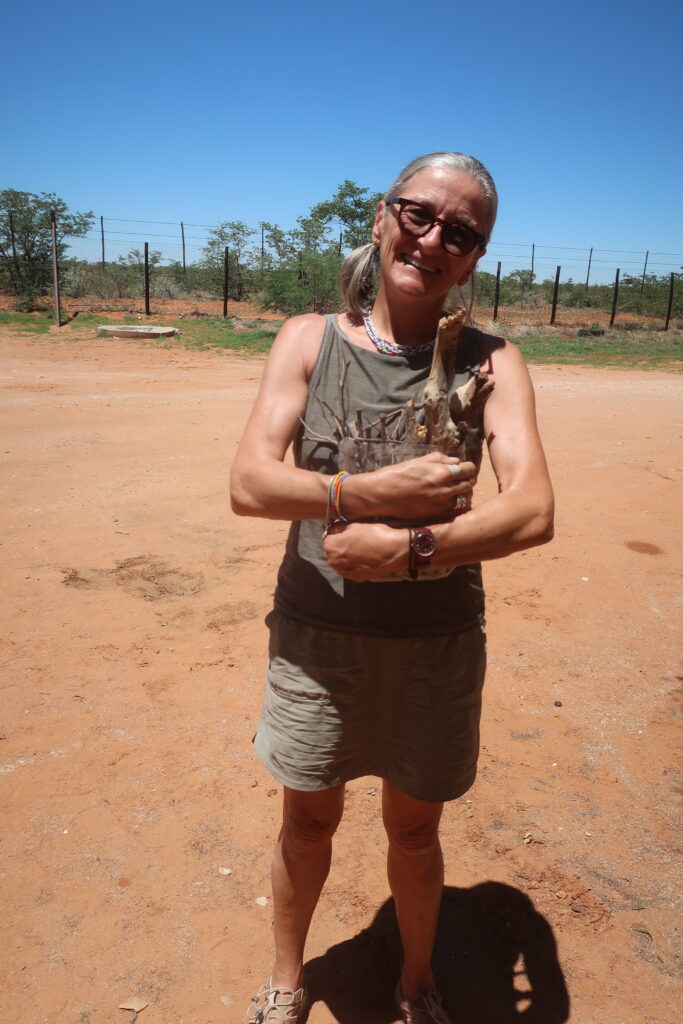
In return, Maria’s present to me is a brand-new Hewlett-Packard laptop. It’s the thought that counts, right?
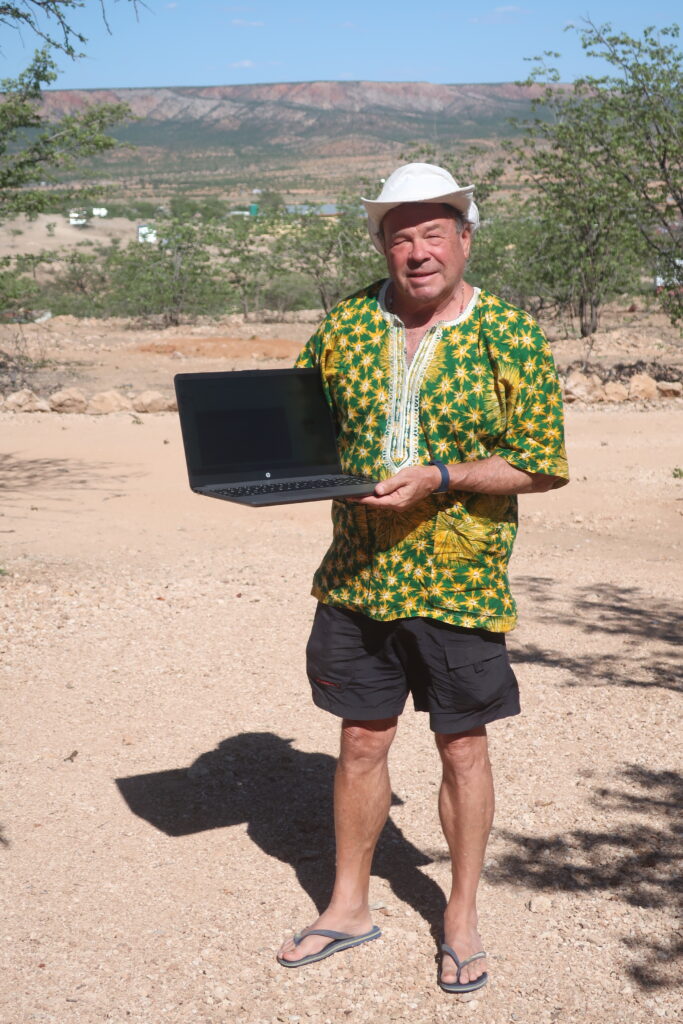
Actually, we need it to replace our fancy travelin’-and-blog-writin’ MS Surface laptop, which without a working charging cable – see entry above – is just an expensive doorstop. We have had to replace the oddball MS Surface charging cable 3 times since we’ve had the thing, at a cumulative cost of, well, a new laptop. Curse you, Microsoft.
